BUSINESS INSIGHT
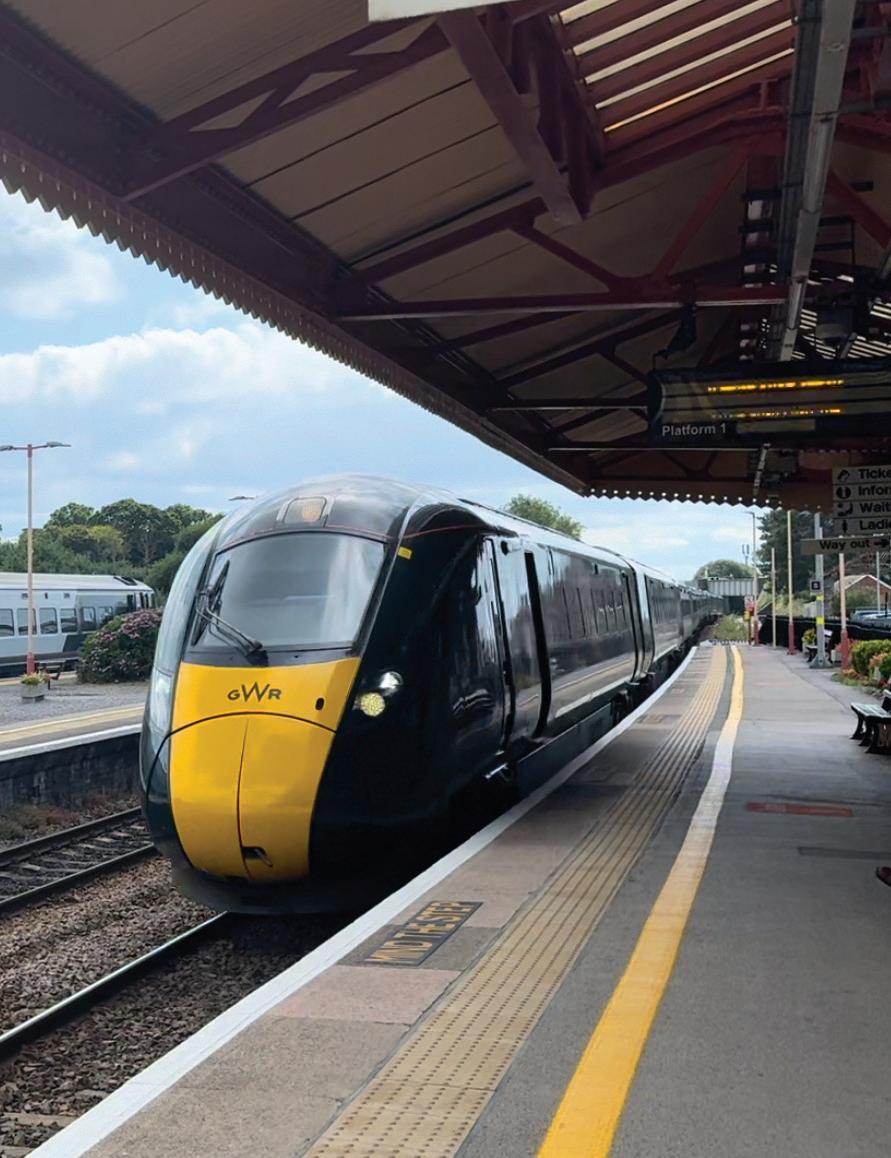

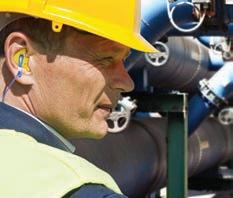
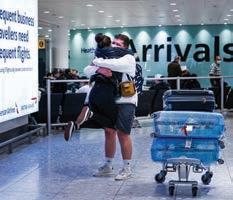
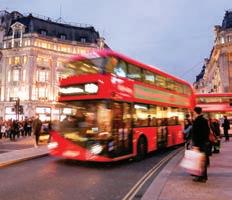

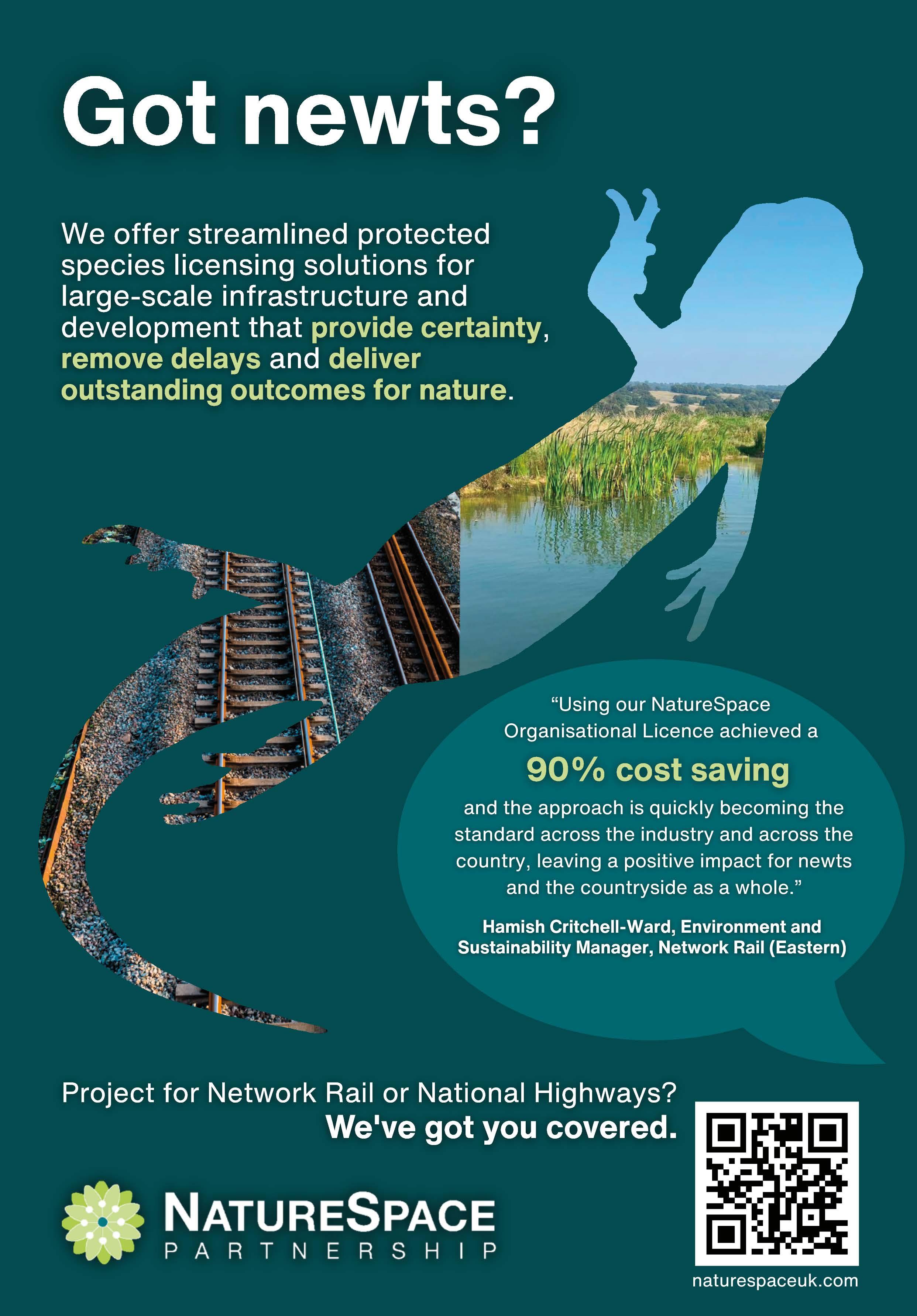


Development, Glendale Countryside Ltd
CONTACT
Jaffrey Media Group
Park View Business Centre Combermere Whitchurch Shropshire SY13 4AL England
GENERAL ENQUIRIES +44 7745 376448
jon@jaffreymediagroup.com
jaffreymediagroup.com










Development, Glendale Countryside Ltd
CONTACT
Jaffrey Media Group
Park View Business Centre Combermere Whitchurch Shropshire SY13 4AL England
GENERAL ENQUIRIES +44 7745 376448
jon@jaffreymediagroup.com
jaffreymediagroup.com
Welcome to Business Insight UK Magazine. This issue covers Network Rail’s role in the UK’s transport infrastructure, where it manages a network crucial to the economy and community connectivity. Additionally, we examine Heathrow Airport, which experienced an increase in transatlantic passengers, serving over 5.7 million in February and observing a 7% rise in traffic to the USA and Canada.
We also delve into Transport for London (TfL), the integrated transport authority responsible for the dayto-day operation of the capital’s public transport network and main roads. TfL oversees services ranging from the iconic London Underground to buses, trams, and the Docklands Light Railway, ensuring that millions of residents and visitors can travel efficiently and safely across the city.

Sustainability has become a significant focus for Network Rail. With the UK government’s goal of achieving net-zero carbon emissions by 2050, Network Rail plays a crucial role in meeting these environmental objectives. To this end, the organisation has developed a comprehensive sustainability strategy encompassing several key initiatives aimed at reducing carbon emissions, enhancing biodiversity, and minimising waste. A surge in transatlantic passengers has reinforced Heathrow’s spot as the UK’s gateway to growth. Heathrow served more than 5.7m passengers in February, including a 7% increase in traffic to the USA and Canada. February marked 12 months in a row where average daily passengers exceeded 200,000. Adjusted for leap years, it was the busiest February on record. There was a spike in interest from winter sunseekers for destinations across the Caribbean, Italy and Greece. Routes to global business hubs including Delhi, Dubai, Mumbai and Riyadh were consistently taking off with the fewest empty seats.
TfL’s investments are pivotal in maintaining and upgrading London’s extensive transport network. One of the most notable investments is the ongoing conversion of Tube stations to LED lighting. With over 40% of Tube stations, including major hubs like King’s Cross St Pancras, already upgraded, TfL is on track to achieve full conversion by the start of the next decade1. This initiative not only enhances the passenger experience by providing brighter and safer environments but also significantly reduces energy consumption and operational costs.
As always, we value your feedback and contributions. Your insights are what make our publication a trusted resource within the UK Business community. Please feel free to reach out with your thoughts, or if you have a story, you believe should be shared.
Thank you for your continued support, and we hope you enjoy this issue!
Jon Jaffrey CEO - Jaffrey Media Group
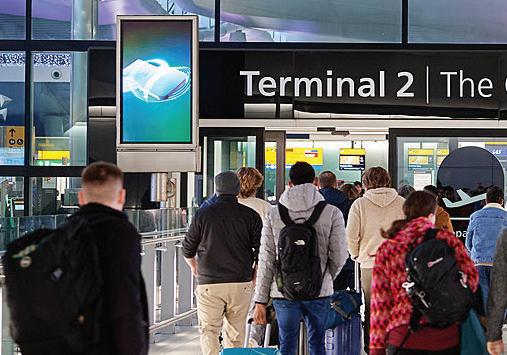
Network Rail: Driving Innovation and Sustainability in the UK’s Rail Future
Network Rail’s story is one of evolution, innovation, and commitment to excellence. From its historical roots to its modern-day operations, the organisation has consistently demonstrated a dedication to enhancing the UK’s rail infrastructure. Through strategic development, sustainability initiatives, a focus on workforce wellbeing, robust supply chain management, thought leadership, and targeted investment, Network Rail is poised to meet the challenges of the future. As it continues to drive progress and deliver value for passengers, freight operators, and the wider community, Network Rail remains a pivotal force in shaping the future of transportation in the United Kingdom.
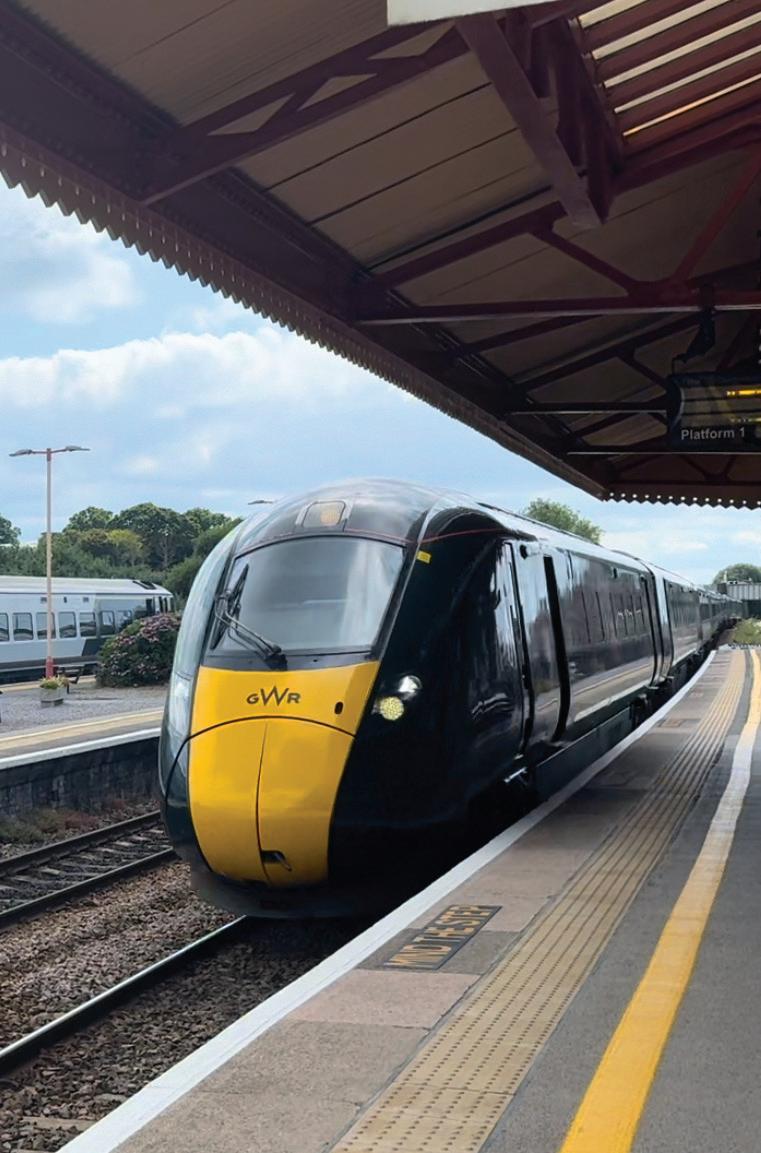

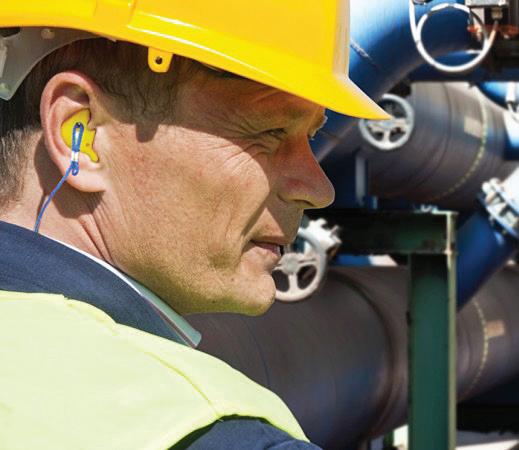


ProtectHear unveils new bone-conduction accessory to mark 25-year anniversary of hearing protection innovation for the rail sector and other noisy work environments
As the beating heart of international travel in the United Kingdom, Heathrow Airport stands as a towering testament to global connectivity and economic prowess. Nestled in the western peripheries of London, Heathrow is not just the busiest airport in the UK but also one of the most significant aviation hubs worldwide. This piece delves into the intricacies of Heathrow, exploring its history, current operations, economic impact, and future prospects, all while highlighting the challenges it faces in an ever-evolving global landscape.
Transport for London: Pioneering Sustainable Urban Mobility
Transport for London (TfL) is responsible for managing the majority of London’s public transport network, including buses, trains, trams, and cycling infrastructure. Over the years, TfL has worked tirelessly to enhance the city’s transport system, ensuring it meets the needs of a growing population while prioritising environmental sustainability. This involves implementing new technologies, expanding services, and promoting eco-friendly transport options to reduce the city’s carbon footprint. Through these efforts, TfL aims to provide a reliable, efficient, and sustainable transport network that supports London’s economic growth and improves the quality of life for its residents.


Network Rail is vital to the UK’s transport infrastructure, managing a network essential to the economy and community connectivity. Its history shows transformation in response to societal needs and technological advancements. Network Rail focuses on sustainability, innovation, and strategic investment. This editorial examines its development, sustainability efforts, workforce dynamics, supply chain management, thought leadership, and investments. Network Rail
has played a crucial role in the evolution of the UK’s railways, adapting to changes in transportation demands and integrating cutting-edge technology to enhance efficiency and safety. The organisation has committed to reducing its environmental impact through various sustainability initiatives, such as promoting energy-efficient practices, reducing carbon emissions, and conserving natural resources across its operations.
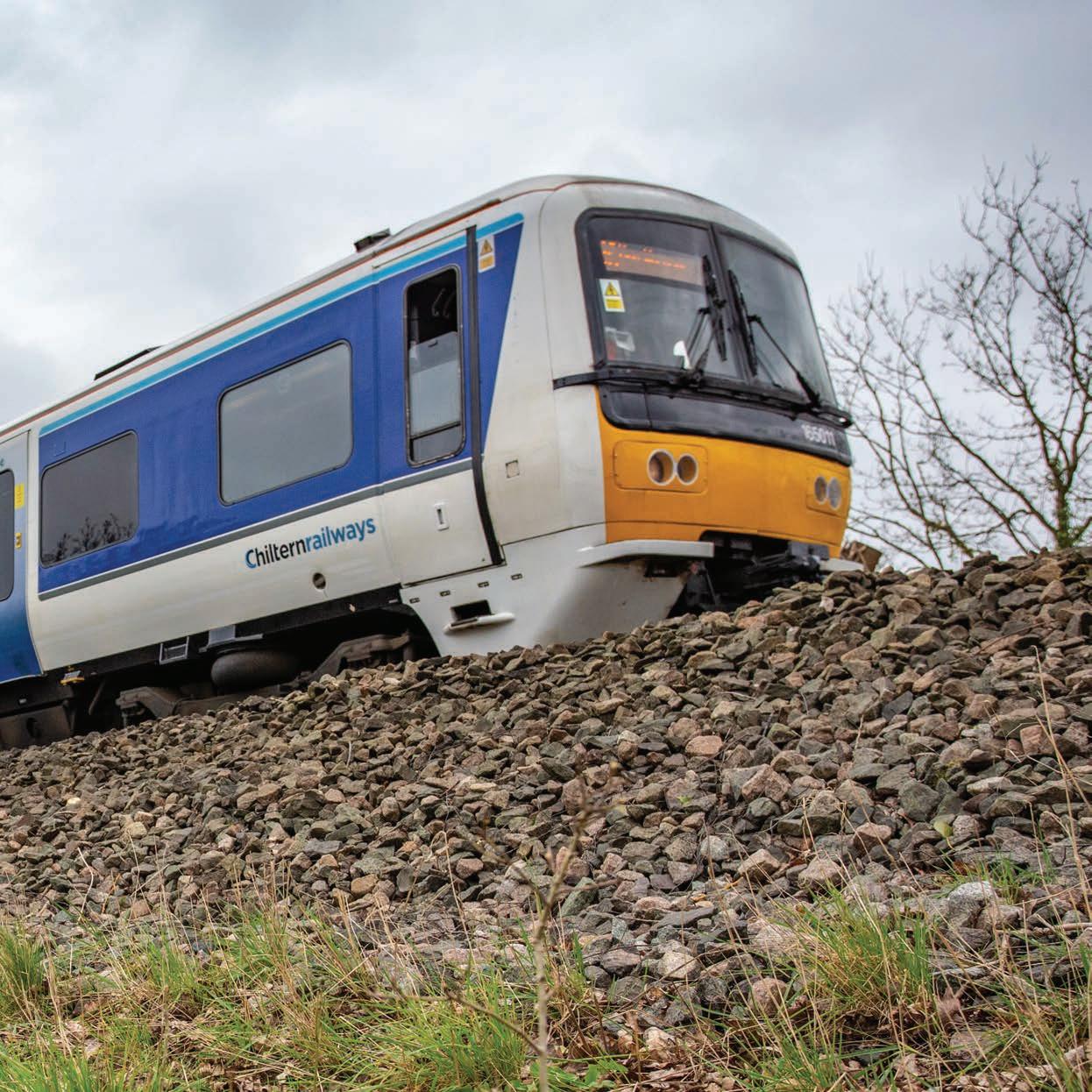
The history of Network Rail is a testament to resilience and adaptation. Emerging from the privatisation era of British Rail in the 1990s, it was established in 2002 as a not-for-dividend company, taking over from the troubled Railtrack. This transition marked a pivotal shift towards a more accountable and safety-focused organisation. Network Rail’s mandate was clear: to maintain and improve the rail infrastructure, ensuring safety and reliability for millions of passengers and freight services. Over the years, it has made significant strides in modernising the railways, investing in cutting-edge technology
and infrastructure upgrades. The organisation’s journey mirrors the broader narrative of the UK’s rail industry, balancing public accountability with operational efficiency and innovation.
Development has been a cornerstone of Network Rail’s strategy. Significant projects such as the Thameslink Programme and the electrification of key routes underscore its commitment to enhancing capacity and efficiency. The Thameslink Programme, for example, has transformed north-south travel through London, increasing capacity and frequency of services. Meanwhile,
The rail industry is evolving, and staying ahead means upgrading ageing networks while keeping sustainability, safety, and efficiency in mind. TXO helps rail operators meet these demands by recovering valuable assets, modernising networks, and reducing environmental impactall while saving costs.

How we’re making a difference
› SWB Bus und Bahn: Urban mining in action
We helped SWB Bus und Rail, the metro and urban rail operator for the city of Bonn, Germany, recover 150 tonnes of copper from 280 tonnes of disused signalling cables across nearly 16 km of track.
This urban mining project reduced fire hazards, freed up space for future infrastructure, and supported circular economy goals. By transforming obsolete infrastructure into a valuable resource, SWB made a profit while cutting CO2 emissions by 237 tonnes.
› Network Rail: Repairing legacy telecoms
For over 15 years, we’ve been Network Rail’s trusted repair partner, extending the life of telecom equipment over 30 years old. In the past year alone, we repaired over 100 legacy units, with just 7% found beyond economic repair.
Our work supports critical signalling systems, avoids the need for retraining staff on new telecom platforms, and reduces environmental impact - all while maintaining the highest standards of safety, quality and performance.
Transforming technology for a sustainable future
Decommissioned cables and ageing equipment is a hidden revenue stream. We specialise in urban mining, extracting valuable materials like copper from old networks and sourcing rare or end-of-life components to keep systems running.
Extend equipment life with expert repair
We’ve helped major operators like Network Rail avoid costly replacements by repairing, upgrading and enhancing equipment that’s decades old.
Upgrading railway systems can be complex and expensive. We make modernisation seamless by efficiently removing outdated technology, freeing up space, and ensuring a smooth transition to newer systems.
We recycle approximately 100 tonnes of material each month, helping rail operators meet sustainability targets with identifying and salvaging their forgotten assets out of their urban mine.
Don’t let outdated infrastructure hold your network back. Partner with TXO to reduce waste, maximise asset value, and build a safer, more sustainable railway fit for the future.
Contact us today to find out how we can help.
Scan the QR code to learn more about our rail & transport solutions.
electrification efforts have aimed to reduce carbon emissions and improve service reliability. These projects not only reflect technological advancement but also a deep understanding of the socio-economic benefits of a robust rail network. The ongoing commitment to High Speed 2 (HS2) further exemplifies Network Rail’s vision for the future, promising to revolutionise travel in the UK by reducing journey times and boosting regional economies.
A 50-tonne footbridge has been installed by Network Rail at Darlington station – marking a major milestone in the £140m transport hub transformation. The enclosed, step-free pedestrian bridge links the existing grade II-listed station with the new platforms 5 and 6 and eastern concourse building. The bridge was fixed into place over the weekend after arriving on Friday 21 February in two parts – one weighing 32 tonnes and measuring 31 metres in length, the other 18 tonnes and 16 metres. A hole had to be created in the Victorian station’s roof to allow the bridge to slide into place – using a 750-tonne crane which was purpose built at the site by a smaller crane.
Network Rail teams and partners are delivering £98m of Department for Transport-funded rail enhancements as part of the wider £140m scheme. The upgrades include the new platforms,
as the birthplace of the railways. The project’s target completion date is December 2025 – a fitting close to this year’s Railway 200 celebrations marking the 200th anniversary of the first passenger journey.
Luke Durston, Network Rail principal programme sponsor, said: “We’re at a crucial and exciting stage in this transformational project, and the successful installation of this footbridge is a significant milestone.
“The site as a whole is really taking shape now, and the bridge provides a prominent visual marker of the progress being made.
We’re grateful to passengers and other station users for their understanding during the disruption caused while this work is undertaken.”
Matthew Murr, operations director, BAM UK and Ireland, said: “A huge amount of work has gone into reaching this prominent milestone, and it truly stands as a testament to the hard work, dedication, and unwavering commitment of every single member of the team.
This success has been made possible through a shared vision and collaboration with our partners from the early development stages, through the planning phases, and into the execution of the work itself.



40 years of helping business and society build excellence in managing uncertainty, safeguarding value, and seizing opportunity.
62000+ Global Network
9000+ IRM Members
7200+ Certified Members
Boost your career with IRM’s new, short Awards in risk, finance, and AI.
Take the next step in your risk career with our globally recognised qualifications.
Discover what the IRM has to offer, scan below

Build CPD hours and upskill swiftly across 20+ dynamic topics.
Partner with us and embed risk as a strategic enabler across your organisation.
“IRM helped me open my eyes to bigger risks, and better ways of managing and mitigating them. It’s given me the confidence that I’m applying the right frameworks in my organisation and even in my personal life.”
Catherine Nyaga-Mbithi – Kenya, Internal Audit Manager, IRM Learner
us to start the conversation

Elevate your leadership to transform your organisation.
Our executive development programmes empower leaders to accelerate sustainable growth, strengthen performance and create measurable impact that will shape a stronger future.
Transform complexity into clarity, challenges into growth and change into opportunity with Cranfield.

LMQ have developed unique and powerful methods from 40 years of training high performance teams in human factors, especially in safety critical organisations.
www.lmq.co.uk
Just get in touch at ce@lmq.co.uk
BAM is now looking forward to the next stages of work and continuing a transformation that celebrates Darlington’s railway heritage.”
Tees Valley Mayor Ben Houchen added: “It’s great to see Network Rail’s side of this vital project is taking shape. Darlington deserves a station fit for the modern day as a gateway to our brilliant region – and this new bridge going in is a significant moment for the overhaul.
The extra platforms will open the door to better services across Teesside, Darlington and Hartlepool and strengthen our efforts to get more freight on our railways to boost our vital industries.
I’m proud our work was handed over to Network Rail on time and on budget – and I’m pleased the project is on target to be complete before the end of this important year.”
Steve Wilson, head of stations at LNER, said: “As station operator at Darlington, it’s great to see such progress being made around us in transforming this historic station to serve the needs of customers in the 21st century.
At LNER, we’re proud to be playing a crucial part in celebrating the bicentenary of the railway, having already unveiled our special ‘Darlington’ train that continues to travel up and down the country. The completion of the Darlington station project will be a fitting culmination to a wonderful time of Railway 200 celebrations.”
Sustainability has increasingly become a focal point for Network Rail. With the UK government’s pledge to achieve net-zero carbon emissions by 2050, Network Rail plays a critical role in realising these environmental goals. The organisation has embraced a comprehensive sustainability strategy, focusing on reducing carbon emissions, enhancing biodiversity, and minimising waste. Initiatives such as using renewable energy sources, implementing energy-efficient technologies, and promoting sustainable travel options highlight Network Rail’s dedication to environmental stewardship. Moreover, the push towards electrification is not solely about operational efficiency but also about reducing the carbon footprint of rail travel. Network Rail has also engaged in partnerships with environmental organisations to enhance biodiversity along the rail corridors, demonstrating a commitment to preserving natural habitats.
Govia Thameslink Railway (GTR), with Siemens Mobility, has successfully upgraded one of its Class 717 Great Northern trains to the latest
specification of the in-cab digital signalling, European Train Control System (ETCS). It’s the latest milestone to be achieved in the groundbreaking East Coast Digital Programme.
On Monday 3 February, unit 717020 ran for the first time on the Northern City Line between Moorgate and Finsbury Park using ETCS Baseline 3, Release 2. There were no issues in this empty coaching stock trial. It is anticipated the entire 717 fleet of 25 trains will be upgraded within the next few months. GTR is already operating all its services on the Northern City Line in ETCS, and it is planned that the signals will be physically removed in May.
The industry is working towards the introduction of digital signalling on the East Coast Main Line (ECML) as part of the government-funded East Coast Digital Programme (ECDP). This latest specification of ETCS will become the new baseline for all services operated on it by GTR and other operators, enabling them to make use of the latest digital infrastructure.
Jonathan Daniels, Network Rail’s ECDP integration lead, said: “This successful upgrade on GTR’s Class 717 fleet establishes a new baseline level of ETCS which will be rolled out across all operators and fleets, providing services at the southern end of the East Coast Main Line. Once again, our Northern City Line pathfinder project is helping pave the way towards the ECML becoming Britain’s first intercity mainline to operate under ETCS control.”
GTR’s head of ERTMS Oly Turner said: “The East Coast Digital Programme will eventually bring huge benefits to GTR and passengers, with a more reliable, more sustainable railway, lower emissions, and even better safety for passengers.
Working with our industry colleagues, we’ve been spearheading the introduction of ETCS and now every one of our Class 717 trains is operating in passenger service using the system on the Northern City Line.
Now, through the joint work of many GTR departments, Siemens and Network Rail, we’ve successful trialled this latest specification of the software. This puts us in great shape for ‘signals away’ on the Northern City Line in May.”
Ben Lane, infrastructure lead and ECDP project director at Siemens Mobility, said: “The Northern City Line project is a great example of how our technology continues to transform rail travel and transport across the UK. With our Siemens Mobility Class 717 trains linked to our very own ETCS


software, we’re showing how to connect track and train with integrated digital solutions.
Working closely with Network Rail and GTR, we’ve already seen the benefits of introducing ETCS and when we move to no signals in May, these benefits will grow even further, reducing maintenance, cutting disruptions, and delivering smoother, more reliable journeys.”
Digital signalling, using ETCS is a proven technology already in use in many countries in Europe and elsewhere. The ECDP will see the first introduction of ETCS to an intercity mainline in Great Britain and will provide the foundation for the future expansion of digital signalling across the network. ETCS is currently in use in the central London section of Thameslink and on the Cambrian Line in Wales, and now on the Northern City Line (Finsbury Park to Moorgate), in the first stage of ECDP.
With signalling information being provided directly to the driver, via a screen in their cab, there will no longer be a need to maintain a large amount of lineside equipment involved with traditional ‘traffic light’ signals. As a result, the amount of signallingrelated engineering work will reduce in the future by around almost half. Additionally, trains are sometimes affected by signal failures; moving to a modern, digitally based system makes this less likely, potentially reducing thousands of hours of delays, and making train services more reliable.
Digital signalling gives train drivers’ continual information about the safe maximum speed for their train. It provides drivers with additional
information about the route ahead, that today’s fixed ‘traffic light’ signals do not. This enables more ‘efficient’ operations, helping trains stay on time. The new technology allows continuous communication between the trackside and onboard equipment. Signallers can continuously communicate with every train on the network and respond in real time using digital tools to help smooth the flow of trains and recover services more quickly after disruption.
Digital signalling contributes to a greener railway. The East Coast Main Line is already electrified, and these upgrades will deliver a further 55,000 tonne reduction in carbon emissions over 60 years – the equivalent to over 65,000 one-way flights from London to New York, or over 2 million passenger train journeys from London to Edinburgh. This is because there is much less physical equipment to produce and maintain compared with what’s needed for ‘traffic light’ signals. The estimated whole life carbon saving over a 60-year period (the expected life span of a ‘traditional’ signalling system) is around 39%. The technology also allows gentler braking, meaning journeys are smoother and use less energy. Finally, a more reliable and punctual railway will encourage more people to choose rail over road and air, ultimately reducing transport emissions for the long-term.
Passenger and freight trains are now benefitting from a once in a generation overhaul of the signalling system serving one of Britain’s busiest railway junctions. Network Rail’s £190m investment in Crewe has seen improvements to track, lineside equipment and digital signalling
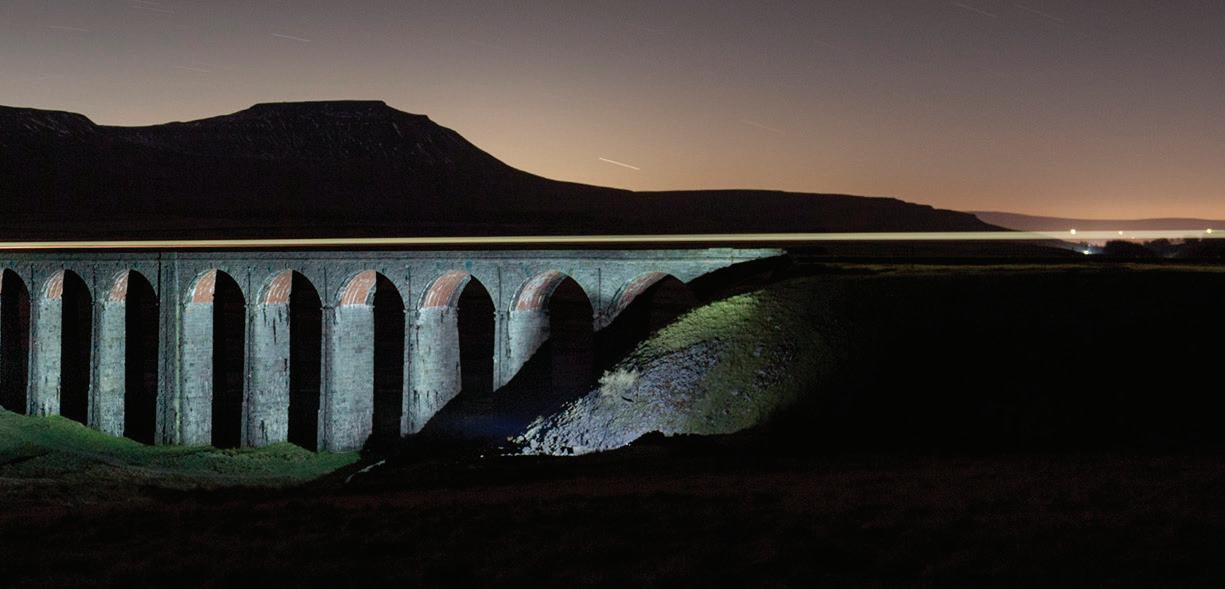
installed at Basford Hall freight depot and the lines which connect it to the West Coast main line.
Christian Irwin, Network Rail’s North West and Central region Capital Delivery director, said: “Today is the start of a new era for the way we signal freight and passenger trains through Crewe - one of the busiest junctions on Britain’s railway. This major investment, using the latest technology, benefits both passengers and freight, getting people and goods to where they need to be more smoothly and reliably.
We know that over Christmas this has caused disruption for passengers and we’d like to thank you for bearing with us while we made these crucial Crewe upgrades which will improve future journeys for years to come.”
Louise Ward, Freightliner safety and sustainability director, said: “Basford Hall is one of our big hub locations – it’s the point where we join freight trains which are going on to London and where we split trains which are going up to the North of the country.
The resignalling is all about making the railway as efficient and resilient as it can possibly be. This major investment will make sure that freight and people get to where they need to be, when they need to be there.”
Chris Liptrot, Avanti West Coast operations director, said: “We’re excited the upgrades to the signalling system at Crewe are now complete and would like to thank customers for their patience and understanding, as well as Crewe Alexandra Football Club for their efforts to support those making rail journeys, while Network Rail carried out these works.
Modernising the signals at a key hub on our network is an important milestone for the railway and will help to make journeys on the West Coast Main Line more reliable for decades to come.”
Workforce dynamics at Network Rail are characterised by a diverse and skilled team dedicated to maintaining and improving the rail infrastructure. The company invests heavily in staff training and development, ensuring that employees are equipped with the latest knowledge and skills to meet the challenges of modern rail transport. The employees of Network Rail form the backbone of its operations, and the organisation places a strong emphasis on workforce development and wellbeing. With a diverse team of engineers, planners, and support staff, Network Rail invests heavily in training and development programmes to ensure its workforce is equipped to meet the challenges of modern rail operations. Initiatives such as apprenticeships and graduate programmes are designed to attract and nurture talent, ensuring a pipeline of skilled professionals. Furthermore, Network Rail prioritises employee wellbeing, offering support services and promoting a culture of safety and inclusivity. This focus on people is reflected in its commitment to diversity and inclusion, aiming to create a workplace that represents the communities it serves.
Effective supply chain management is another cornerstone of Network Rail’s strategy, involving close collaboration with suppliers to ensure the timely and cost-effective delivery of materials and services. The organisation’s approach to thought leadership involves proactive engagement
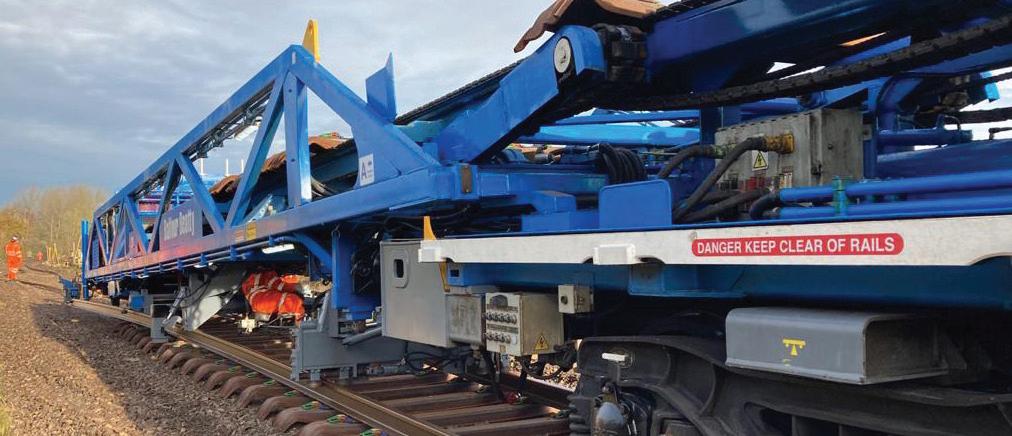
with industry stakeholders to share insights and drive forward best practices in railway management. The supply chain of Network Rail is a complex ecosystem, integral to its capacity to deliver projects and maintain operations. It comprises a vast network of suppliers, from large multinational corporations to small local businesses, all contributing to the delivery of goods and services necessary for rail operations.
Network Rail is committed to fostering strong relationships with its suppliers, ensuring transparency and collaboration throughout the procurement process. This approach not only strengthens the supply chain but also encourages innovation and sustainability. By working closely with suppliers, Network Rail is able to implement new technologies and practices that enhance performance and reduce environmental impact. Moreover, the organisation is dedicated to supporting local economies by engaging with regional suppliers, thereby contributing to job creation and economic growth.
Thought leadership is a critical component of Network Rail’s ethos, as it seeks to influence and shape the future of rail transport. Through research and collaboration with industry partners, Network Rail is at the forefront of innovation in railway technology and operations. It engages in knowledge-sharing initiatives and participates in global forums to exchange ideas and best practices. This proactive approach ensures that Network Rail remains a leader in adopting new technologies and methodologies, from digital signalling systems to predictive maintenance using data analytics. By leading the conversation on the future of rail, Network Rail not only enhances
its own operations but also contributes to the broader transformation of the rail industry.
In terms of investments, Network Rail undertakes significant projects aimed at enhancing capacity, reliability, and overall performance of the rail network. These investments not only improve passenger experiences but also contribute to the broader economic and social well-being of the communities served by the railway system.
Investment and development are key drivers of Network Rail’s strategy, underpinning its mission to deliver a world-class railway. The organisation has embarked on an ambitious programme of investment, targeting critical areas such as infrastructure upgrades, technological innovation, and capacity enhancement. Projects like the Crossrail initiative demonstrate Network Rail’s commitment to transforming urban transport and alleviating congestion. Investment in digital technologies, such as the rollout of the European Train Control System (ETCS), highlights its focus on improving safety and efficiency. Furthermore, Network Rail is actively seeking to leverage private investment and public-private partnerships to fund major projects, ensuring a sustainable financial footing for future growth.
TRU welcomed Rail Minister Lord Peter Hendy to Ravensthorpe and Huddersfield in West Yorkshire, to see the progress being made in transforming train travel in the north of England on the Transpennine Route Upgrade.
Lord Hendy was joined by Tracy Brabin, Mayor of West Yorkshire, to visit the sites and joined local schoolchildren and TRU apprentices who placed a time capsule in Ravensthorpe, to mark
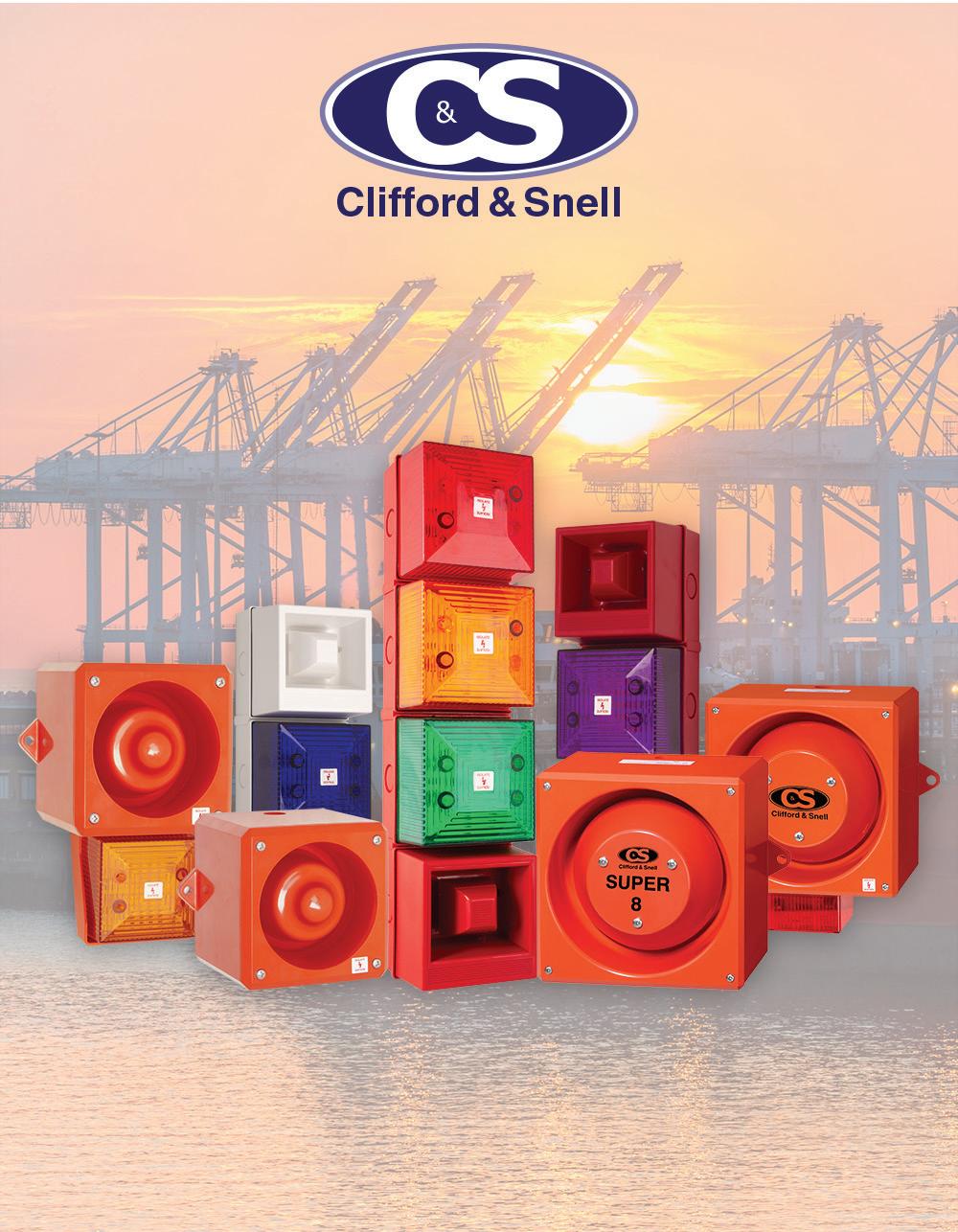
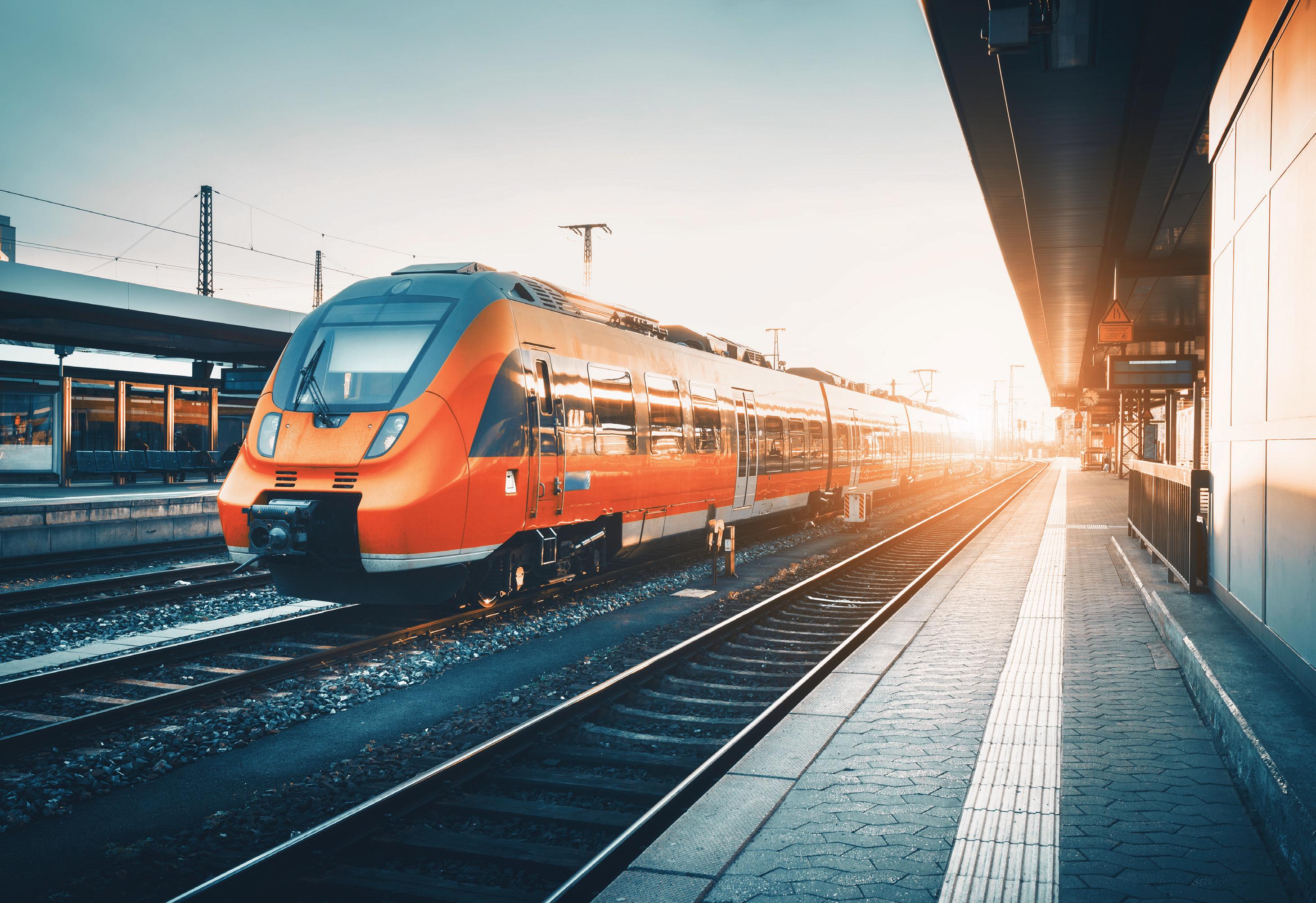
Clifford & Snell, a brand of Moflash Signalling, is a UK manufacturer of high-performance audible, visual, and combined signalling devices for industrial, maritime, and hazardous environments. Some products are Network Rail 086/023553 & 086/023556 (PA05/07230 for use on Level Crossings) certified, making them ideal for railway applications.
Reliable, robust, and versatile, C&S products ensure safety and visibility where it matters most.

Discover C&S, more than Network Rail certified products, explore the solutions behind our signalling products. Visual Acoustic

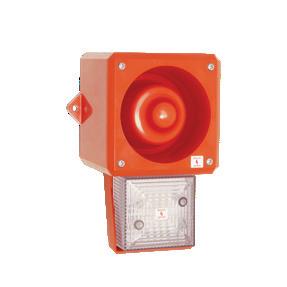
TRU’s success so far and commemorate the 200th anniversary of the birth of the modern railway, when Britain and the world changed forever.
Ravensthorpe is home to one of the biggest civil-engineering sites in the country, where a new viaduct and fly-over will allow faster trains to overtake slower ones and the relocation of the station. This enables the number of tracks to be doubled from two to four, so journeys across the Pennines have faster services and increased capacity.
The Huddersfield station upgrade is another major project, helping achieve many of the wider benefits TRU will deliver. Work at the Grade 1 listed station is well underway as facilities are modernised, whilst protecting its historical and cultural importance.
James Richardson, TRU Managing Director, said: “The work undertaken in Ravensthorpe and Huddersfield is key to unlocking faster trains and more services with more seats for passengers, plus increased freight movements.”
I’m delighted Rail Minister Lord Peter Hendy and Mayor Tracy Brabin have been able to see for themselves the progress being by Team TRU, as we
edge closer to transforming rail journeys helping to enable the north to achieve its true economic potential.”
The time capsule is the first on TRU and will sit under the foundations of the new viaduct and be in place for hundreds of years.
Items stored include a letter to the finder, a rail ticket from Manchester to York, a dated local newspaper, and schoolchildren’s designs for how the railway will look like 200 years from now.
Lord Peter Hendy, Rail Minister, said: “We are upgrading rail links across the north - slashing journey times and investing in frequent, greener, and more reliable services between Manchester, Huddersfield, Leeds and York.
Ravensthorpe is one of several new stations which will have better facilities and improved accessibility.
Transforming transport links is key to driving up productivity and unlocking opportunities for jobs, education, and businesses in our communities, including Ravensthorpe, whose new station alone is supporting the delivery of 4,000 new homes.”
Tracy Brabin, Mayor of West Yorkshire, said: “Having better transport across the north is imperative to growth.

No matter where you’re going or where you’re coming from, you should be able to get on a train that’s on time and can get you there quickly and reliably.
That’s why the work we’ve seen today is so important, to connect both sides of the Pennines and get people to where they need to be.
This is the biggest infrastructure project underway in the North of England and it’s great to hear how it’s being delivered on time and on budget.”
The majority of projects on TRU are now in design and delivery with significant upgrades beginning to come into fruition. Already, electric services are running between Manchester and Stalybridge, and some electric services are due to begin running between Church Fenton and York later this year.
With new trains, more services and more seats –capacity up by one third – improved connectivity between Manchester, Huddersfield, Leeds and York will leave a lasting social and economic impact on the North.
TRU currently has a workforce of 5000 people and aims to provide 8000 roles in its lifetime.
At least 60% of the project workforce are employed from within 25 miles of the route and
80% within 40 miles. A minimum 25% of the project supply chain spend will be with businesses within 25 miles of the route, and a minimum of 33% with small to medium sized enterprises, micro businesses, and voluntary sector organisations. So far over £500M has been spent with SMEs.
In conclusion, Network Rail’s story is one of evolution, innovation, and commitment to excellence. From its historical roots to its modernday operations, the organisation has consistently demonstrated a dedication to enhancing the UK’s rail infrastructure. Through strategic development, sustainability initiatives, a focus on workforce wellbeing, robust supply chain management, thought leadership, and targeted investment, Network Rail is poised to meet the challenges of the future. As it continues to drive progress and deliver value for passengers, freight operators, and the wider community, Network Rail remains a pivotal force in shaping the future of transportation in the United Kingdom.
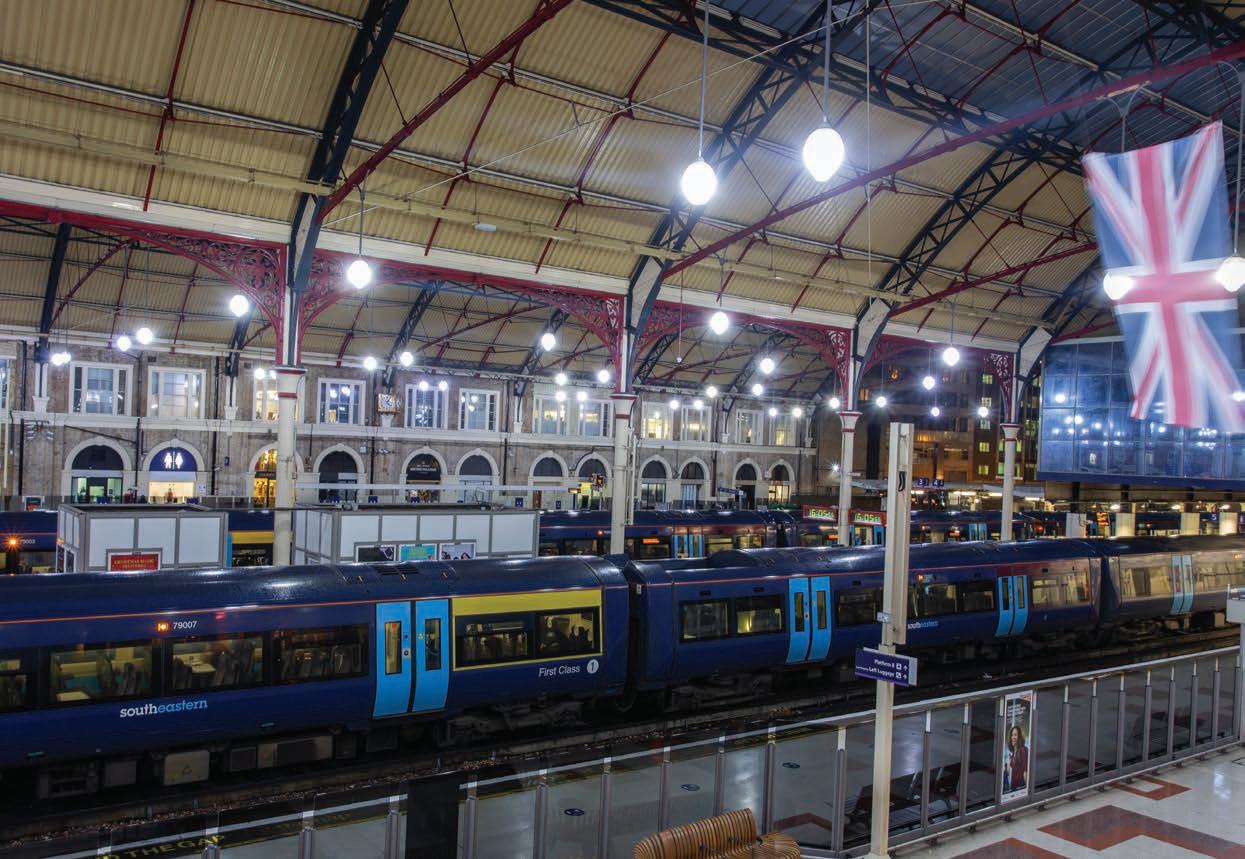
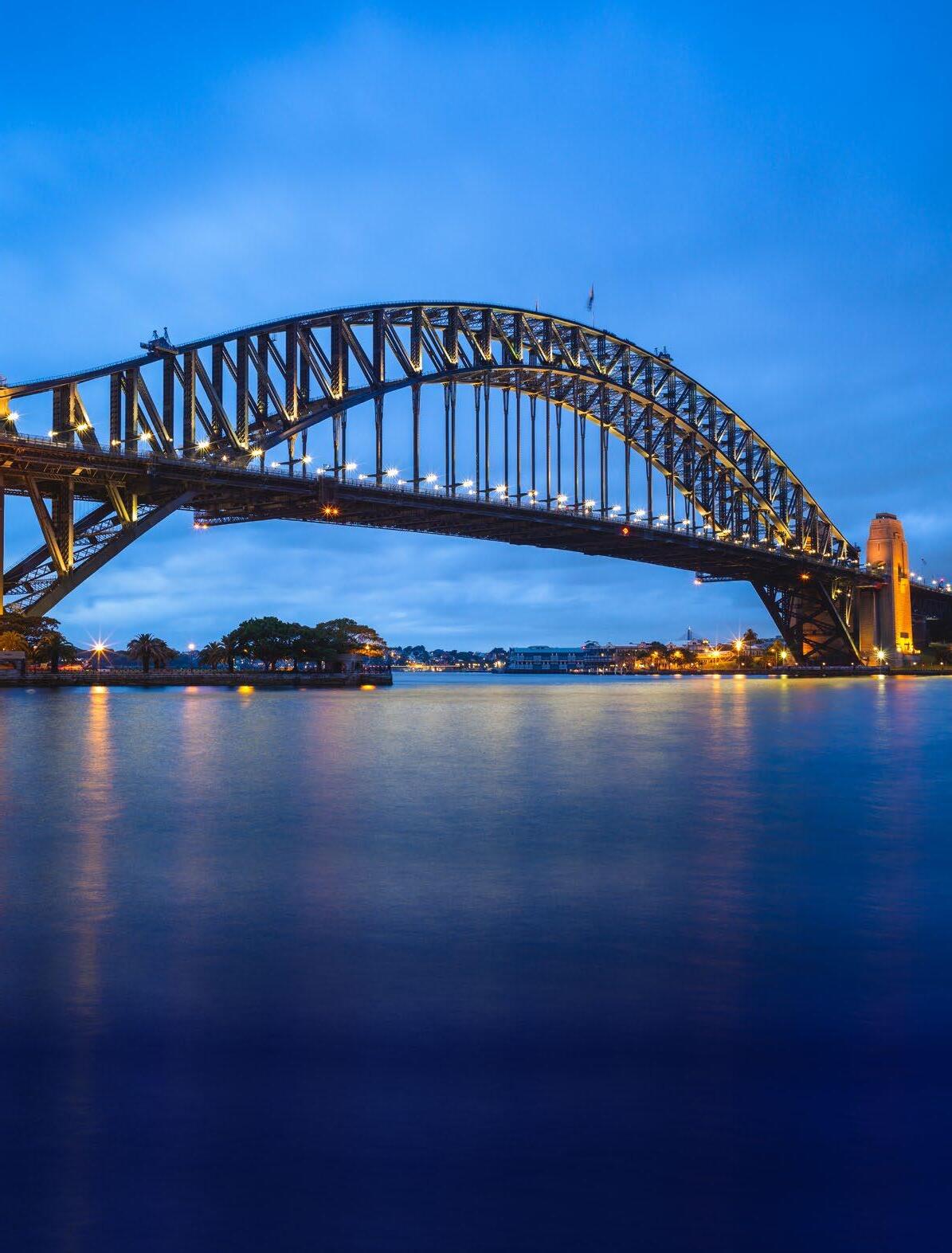
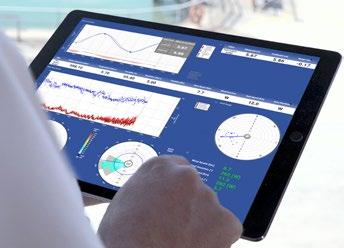









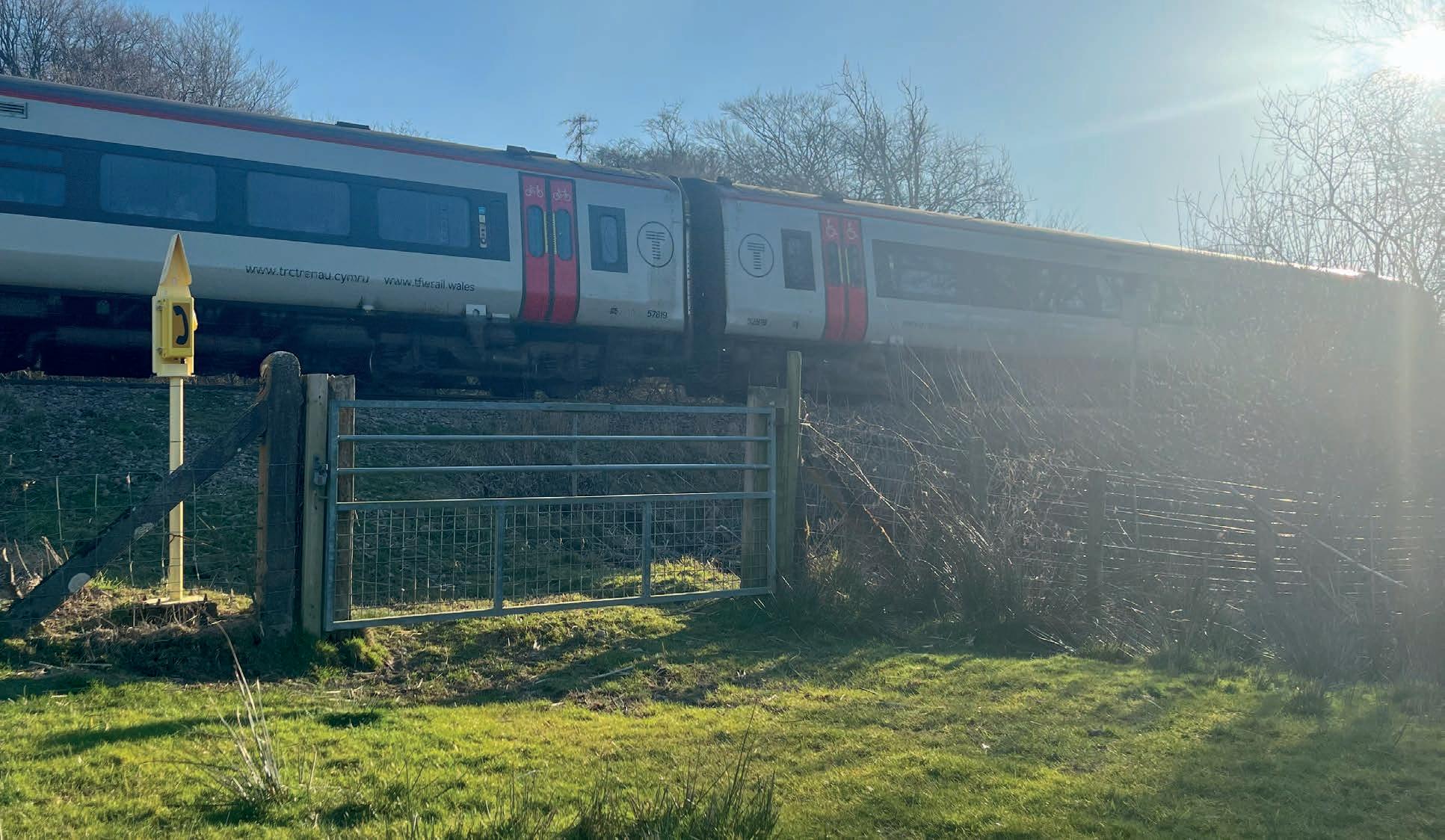
Remote crossings are often located far from the electricity network. In such situations, there will be a cost associated with extending the grid to where it is needed. With recent advances in battery, solar PV and fuel cell technology, it is often significantly quicker and more cost effective to generate and store the power with a well-designed, reliable remote power system (RPS).
Vamos is a fully automated light sign system, designed to improve the safety at low traffic level crossings. To guarantee power supply for such an important piece of safety equipment, it is important that the RPS is suitable for the location, can be monitored remotely and holds enough power during adverse weather conditions, so that it can operate the lights 365 days of the year.

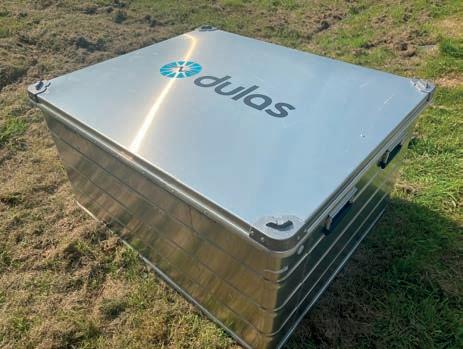
DuraSource™ is an advanced remote power system utilising a combination of technologies to deliver reliable and consistent power. By integrating solar photovoltaic panels, fuel cells and batteries as part of a robust and rapidly deployable package, this innovative and durable solution is ideal for powering critical applications in remote and demanding environments.
• Flexible Power Configuration
Tailored to your power needs by customising for AC or DC, batteries, solar and/or fuel cells.
• Weatherproof
Built to withstand a range of weather conditions, ensuring reliable performance in remote environments.
• Modular Design
Easily match your load requirements to a suitable power system arrangement.
• Remote Monitoring
Stay informed and in control of your power system from anywhere, anytime via our web portal.
• Quiet Operation
Near silent, making it suitable for installations where noise pollution is a concern.
• Compact and Portable
Small footprint to allow for easy transportation and installation in the most difficult locations.


Leading provider of personally moulded earplugs ProtectHear has worked closely with Network Rail as an approved supplier and other major players in the rail, plant and transportation sectors since the year 2000. Today, the specialist supplier has announced the launch of their new boneconduction innovation, that complements their market-leading earplugs, creating an unbeatable solution.
Given the high-noise nature of track maintenance, rail depots, and engineering sites, ProtectHear’s expertise ensuring rail workers have the right hearing protection - without compromising situational awareness - has been crucial to the specialist provider’s success in this field. This exciting, new accessory strengthens their offering further.
Their new headset is based on revolutionary new technology. It allows users to receive audio transmissions via bone conduction, bypassing the ear canal while still using ProtectHear’s marketleading earplugs for noise attenuation. This
innovation is a game-changer for railway engineers, track workers, and anyone in a noisy workplace that needs clear, uninterrupted communication for their day-to-day operations.
ProtectHear’s custom-moulded earplugs and accessories are used extensively to prevent hearing loss in the rail sector
With HSE’s CUFF guidelines reinforcing the importance of high-quality, well-maintained hearing protection, ProtectHear’s latest offering ensures compliance while addressing real-world industry challenges. Railway workers can now benefit from a solution that enhances clarity, safety, and comfort in extreme noise conditions without over or under protection.
ProtectHear plugs are used extensively across the rail sector, and play a key role reducing noise-induced hearing loss while enhancing communication and safety. In comparison to traditional disposable earplugs, ProtectHear’s solutions offer a superior fit, greater longevity, and built-in compatibility with communication systems, ensuring railway workers can stay safely connected in the field without sacrificing protection.
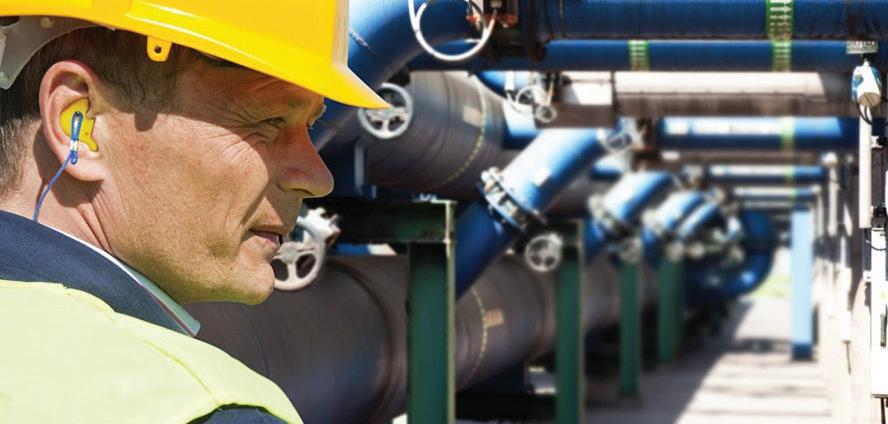

Rail infrastructure projects demand solutions that are both financially viable and environmentally sustainable. ProtectHear’s earplugs have a five year lifespan, significantly reducing waste and saving enterprises substantial costs. Compared to disposable earplugs, an organisation using ProtectHear earplugs for just 10 workers will save over £6,000 in five years, while preventing an astonishing 36,000 single-use earplugs from being discarded into landfill.
ProtectHear’s credentials align perfectly with the environmental sustainability strategies of organisations like Network Rail. By choosing ProtectHear, companies can improve safety, reduce costs, and reduce their carbon footprint in one seamless solution.
ProtectHear offers a no obligation 4-week free trial. This hands-on experience allows railway professionals to test the comfort, fit, and communication capabilities of ProtectHear products before managers make a commitment to buy. Call 01507 604322 to speak a member of our friendly team.
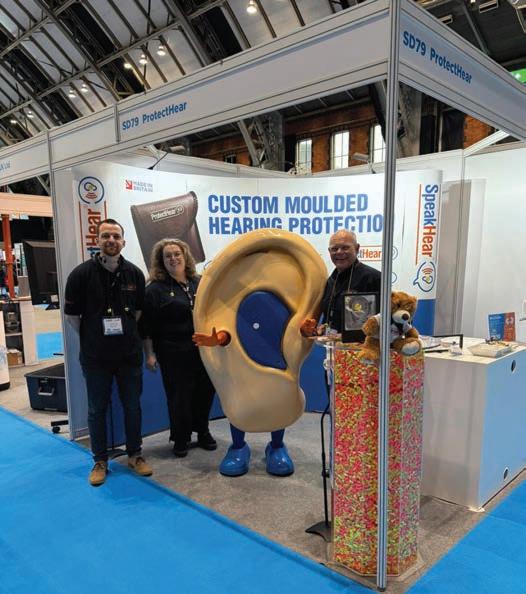
To learn more about how ProtectHear is shaping the future for noisy sector operations, please feel free to visit us at stand 3/E52 at The Health & Safety Event this April. At the show, you will be able to take a close look at the earplugs, learn how ears are moulded for best fit and comfort and try out a range of communications and radio accessories, including the new ProtectHear boneconduction headset.
Whether you’re looking to enhance worker safety, ensure compliance, or invest in a sustainable and cost-effective hearing protection strategy, ProtectHear has the expertise and innovation to support your needs.
With their track record of supporting Network Rail and other major organisations and sectors for so long, ProtectHear leads the way in helping to prevent NIHL (Noise Induced Hearing Loss).
CONTACT: protecthear.co.uk enquiries@protecthear.co.uk 01507 604322

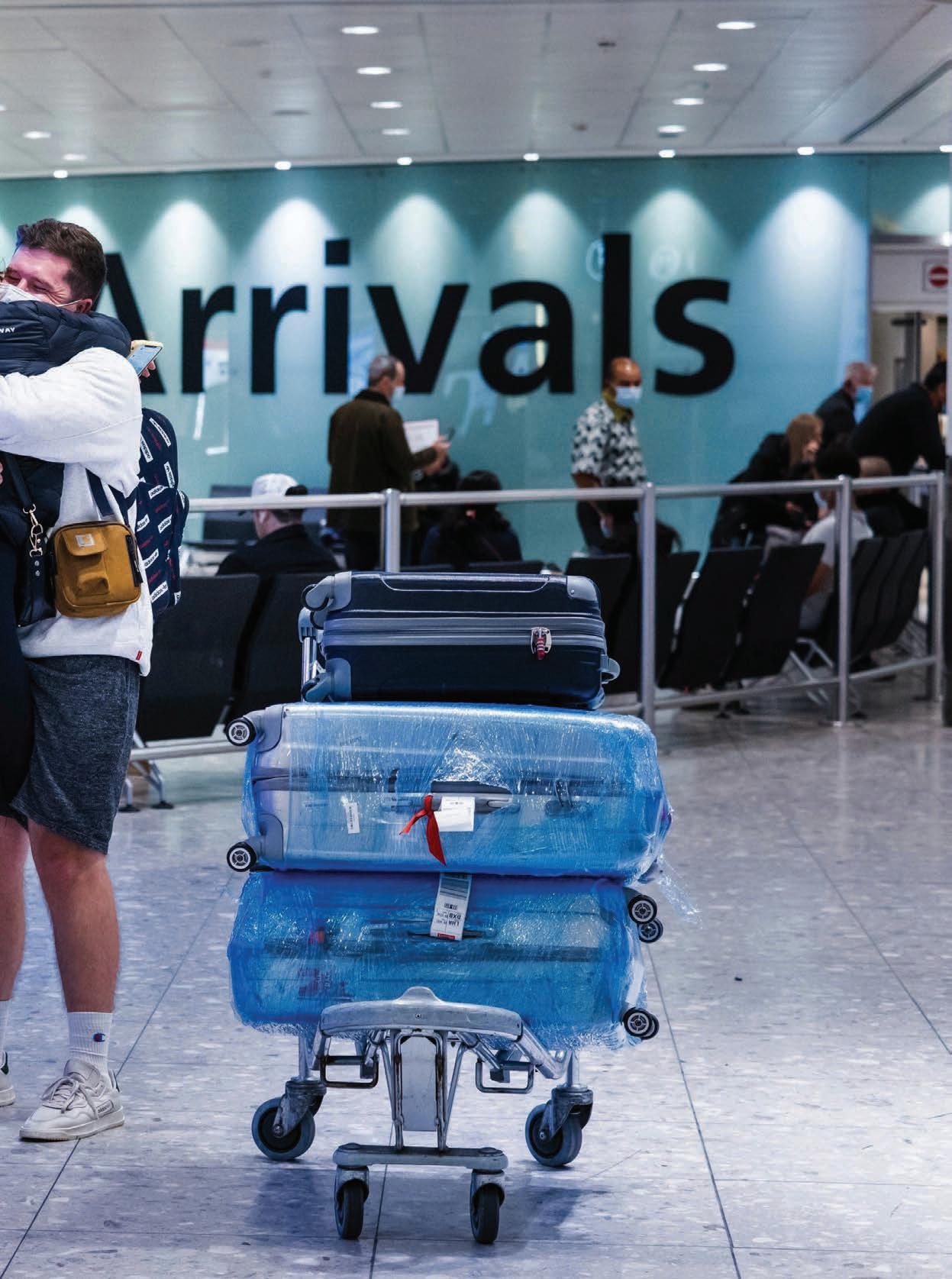
As the beating heart of international travel in the United Kingdom, Heathrow Airport stands as a towering testament to global connectivity and economic prowess. Nestled in the western peripheries of London, Heathrow is not just the busiest airport in the UK but also one of the most significant aviation hubs worldwide. This piece delves into the intricacies of Heathrow, exploring its history, current operations, economic impact, and future prospects, all while highlighting the challenges it faces in an ever-evolving global landscape.
Heathrow’s journey began in 1946 as London Airport, officially renamed Heathrow in 1966. Its origins trace back to a small airfield, which has since transformed into a sprawling complex with five terminals and two runways. The airport’s evolution reflects the broader narrative of post-war Britain’s aspirations towards modernity and globalisation. Over the decades, it has adapted to burgeoning passenger numbers, technological advancements, and the shifting dynamics of international travel.
Today, Heathrow operates over 1,300 flights daily, connecting to more than 200 destinations in over 80 countries. Its two runways, though a subject of ongoing debate regarding expansion, manage an impressive flow of air traffic, rivalling major global hubs like Atlanta and Beijing. The airport’s five terminals cater to different airlines, with Terminal 5 being the home of British Airways, showcasing state-of-the-art facilities and enhanced passenger experiences.
Heathrow’s operations are a complex symphony of logistics, technology, and human endeavour. The airport employs over 76,000 people, from air traffic controllers to retail staff, each playing a crucial role in maintaining seamless operations. Advanced technologies, such as biometrics and automated check-ins, streamline passenger flow, enhancing efficiency and security.
January was Heathrow’s busiest January on record, with over 6.3 million passengers travelling through the UK’s only hub airport - up over 5 percent on the same time last year. January marked the eleventh month in a row Heathrow averaged over 200,000 passengers a day, with trans-Atlantic travel a key contributor of this growth. Over 1.2 million passengers travelled between the UK and US, up 8 percent compared with 2024.
Alongside record-breaking passenger numbers, Heathrow also retained its crown as the ‘Best UK Airport’ at the Travel Weekly Globe Travel Awards
for a fourth consecutive year. This accolade is testament to the hard work of all our colleagues across Team Heathrow. Heathrow’s unrivalled connections ensured over 120,000 tonnes of cargo were successfully delivered in January. That’s twice as much as all other UK airports combinedunderscoring our role as the country’s most valuable port, driving trade and investment across the UK.
As part of their commitment to making every journey better, Heathrow recently unveiled The Windsor by Heathrow. The newly refurbished and rebranded private terminal marks the first stage of the transformation of our world-renowned VIP offering.
We welcome the Chancellor’s recent show of support for a third runway at Heathrow. To successfully deliver this project at pace will require policy changes, including on airspace modernisation, planning policy reform and changes to the regulatory regime. We are now working with our stakeholders to finalise our plans and will submit our proposal to Government by the summer.
Heathrow CEO Thomas Woldbye said: “2025 has started how we mean to go on - serving record breaking passenger numbers and delivering trade and investment across the whole of the UK. To ensure we continue on this upwards trajectory, the Government has signalled their support for an expanded Heathrow. We’ll now work with Ministers to progress the necessary policy changes required to advance our growth plans.”
Heathrow’s economic footprint is substantial, contributing over £3 billion annually to the UK economy. It supports thousands of jobs not just within the airport but also in surrounding areas, fostering regional development. As a hub for business travel, Heathrow facilitates trade and investment, connecting UK businesses with global markets.
The airport’s strategic location enhances London’s status as a global financial centre. It attracts multinational corporations and fosters tourism, contributing significantly to the hospitality and retail sectors. Moreover, Heathrow plays a pivotal role in freight operations, handling over 1.5 million tonnes of cargo annually, thus serving as a vital artery for UK trade.
In recent years, Heathrow has faced mounting pressure to mitigate its environmental impact. As climate change becomes an urgent global concern, airports worldwide are scrutinised for their carbon
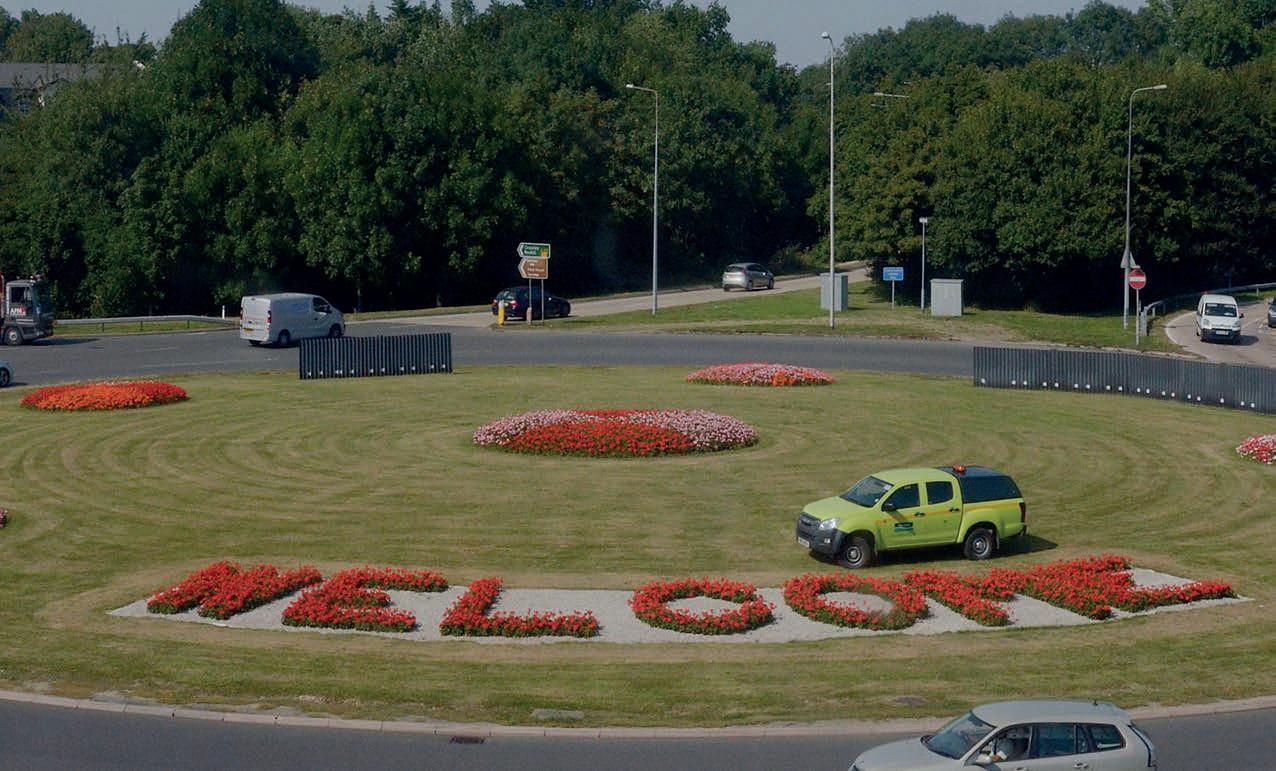
Glendale have been delivering industry-leading Grounds Maintenance services for over 35 years and are the exclusive GM partner for 3 of London’s major international airports.
Glendale provides a forward thinking range of safe, sustainable and innovative Airside and Landside services to Heathrow, Gatwick and London City airports, providing first and lasting impressions of the UK to over 130m passengers per annum.
From grass management and hydroseeding to habitat management and ecological design / construction, Glendale provides a comprehensive range of commercial aviation and private airfield Grounds Maintenance services, ensuring that our partners can run strong operations and provide excellent service for their customers.
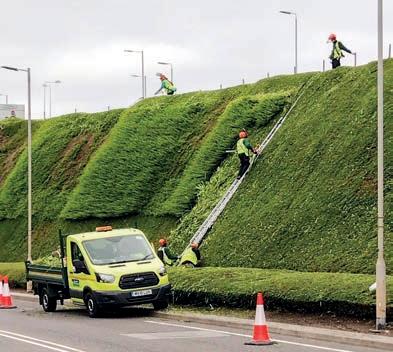

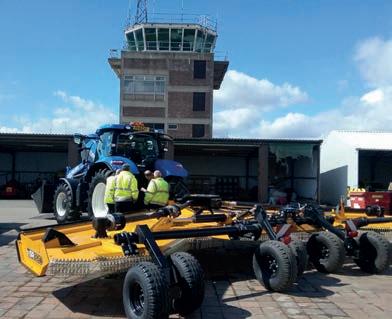
For all aviation Grounds Maintenance enquiries, please email: sales.enquiries@glendale-services.co.uk
www.glendale-services.co.uk
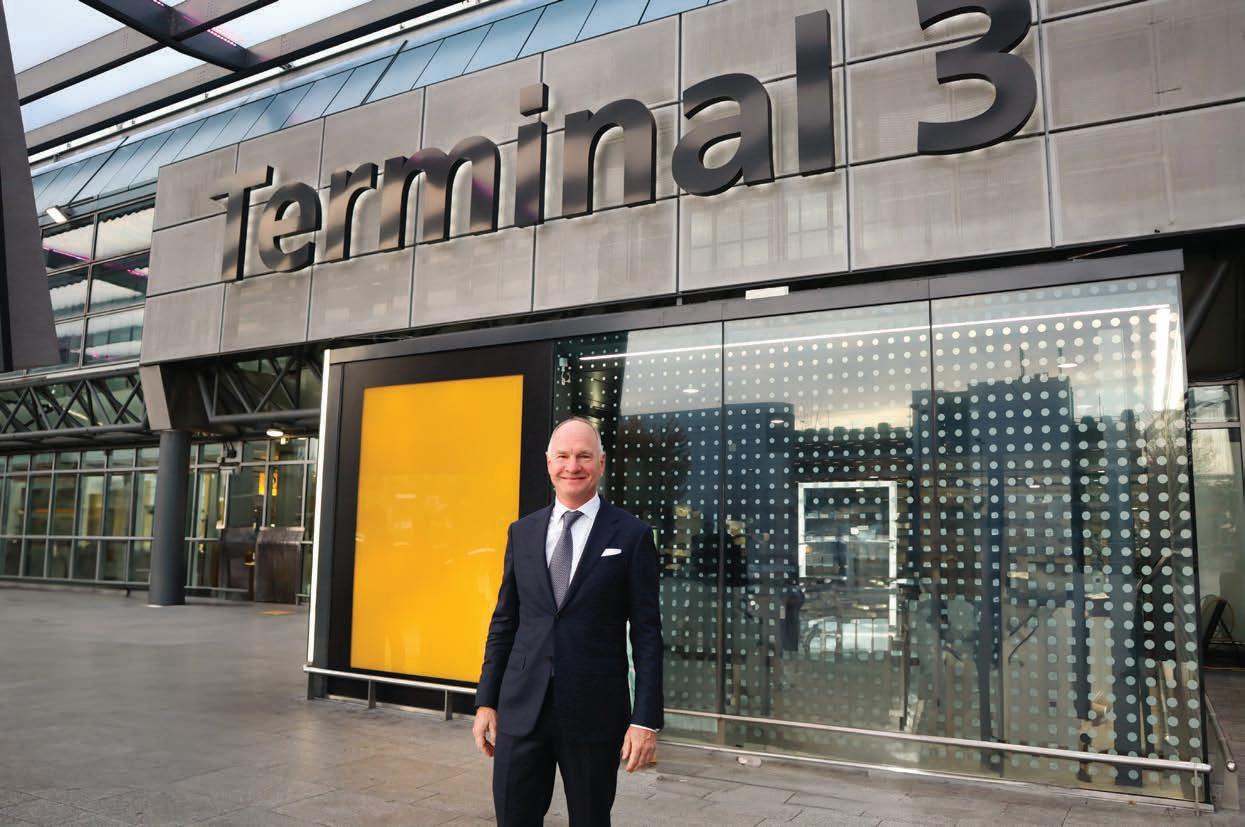
footprints. Heathrow has embarked on ambitious sustainability initiatives, aiming for carbon neutrality by 2030. These include investments in sustainable aviation fuels, electric ground vehicles, and enhanced waste management systems.
However, challenges persist. Noise pollution, air quality, and the contentious third runway proposal remain focal points of environmental debates. The expansion plan, while promising economic benefits, has faced legal and public resistance due to environmental implications. Balancing growth with sustainability is a delicate act that Heathrow must navigate carefully.
A surge in transatlantic passengers has reinforced Heathrow’s spot as the UK’s gateway to growth. Heathrow served more than 5.7m passengers in February, including a 7% increase in traffic to the USA and Canada.
February marked 12 months in a row where average daily passengers exceeded 200,000. Adjusted for leap years, it was the busiest February on record.
There was a spike in interest from winter sunseekers for destinations across the Caribbean, Italy and Greece. Routes to global business hubs including Delhi, Dubai, Mumbai and Riyadh were consistently taking off with the fewest empty seats.
As demand for more capacity at the UK’s hub continues, Heathrow remains committed to providing a boost to the UK economy while continuing to reduce its environmental impacts. In its 2024 Sustainability Report published, it confirmed a 7.5% carbon reduction in the air, and 15% on the ground since 2019, all while serving record passenger numbers, keeping on track for its 2030 targets. More is being done, including Heathrow’s incentive to reach 3% SAF usage this year, 1 percentage point ahead of the Government’s target.
In addition to accelerating decarbonisation, in 2023 the area exposed to higher levels of aircraft noise (55db Lden²) shrank by 18% compared to 2019 and in 2024 the number of late running flights fell, despite being the busiest year ever. Meanwhile all air quality monitors around Heathrow continue to meet UK pollution limits.
One month on from announcing Heathrow’s commitment to invest in the UK’s gateway to growth, initial proposals are being developed for the privately funded expansion of Heathrow for the Government to review this summer.
Alongside the Department for Transport and Transportation Security Administration, Heathrow

began a One Stop Security pilot in February to improve journeys. It offers streamlined transfers for passengers on selected routes from North America connecting to the rest of the world. The landmark agreement strengthens the UK’s hub and is made possible by the world-class aviation security systems in both countries and the support of participating airlines.
Heathrow CEO Thomas Woldbye said: “Even during a traditionally quiet month for aviation in February, we saw sustained and growing demand to fly and export through Heathrow. As the UK’s gateway to growth, we must meet this increase in demand and do it without compromising our strategy to decarbonise and reduce noise impacts. While we welcome the progress that’s been achieved alongside our partners, there’s no complacency – reaching net zero as we grow remains vital.”
Heathrow has embraced technology as a catalyst for innovation and efficiency. The airport’s investment in digital infrastructure enhances passenger experiences and operational resilience. From biometric boarding and real-time flight updates to AI-driven customer service, technology permeates every aspect of Heathrow’s operations. The use of data analytics optimises flight schedules, reduces delays, and enhances safety
protocols. Furthermore, Heathrow collaborates with tech firms to innovate air traffic management systems, ensuring smooth operations amidst increasing flight frequencies. Such advancements position Heathrow as a leader in integrating technology within aviation.
Looking ahead, Heathrow’s future is intertwined with global trends and domestic policies. The airport’s expansion plans, particularly the muchdebated third runway, remain central to its growth strategy. Proponents argue that expansion is essential for maintaining global competitiveness and accommodating future demand. Critics, however, voice concerns over environmental impact and question the feasibility amidst shifting travel patterns post-pandemic.
Heathrow announces £2.3 billion accelerated investment plan to upgrade the airport over the next two years – the largest private sector capital investment in UK transport infrastructure, with an increase of almost a quarter of a billion compared to previous estimates
Investment will fund projects such as accelerating the airport’s decarbonisation, and over the two years will create contract opportunities for businesses and SMEs nationwide

Increased investment comes as Heathrow publishes the first annual Investment Impact Report illustrating the impact of Heathrow’s £1.1bn investment in 2024
In the largest private sector capital investment in the UK’s transport network, Heathrow announces a £2.3 billion investment over the next two years to upgrade the airport, ensuring the UK’s only hub airport and international gateway continues to move forward and provide better service for passengers and businesses.
The £2.3 billion investment is an uplift of £244 million on previously forecasted investments which will be used to enhance capabilities across all terminals, including baggage delivery and projects to support punctual departures and arrivals. The investment programme will improve service, resilience, passenger experience, and sustainability for all passengers at Heathrow.
The Independent Journeys Project, for example, will empower passengers requiring additional support and give them a choice to travel in the most independent way throughout the airport. Active Travel projects will encourage cycling and walking to the airport and between terminals and are expected to be completed in 2027.
Critically, Heathrow’s increased investment serves to support the Government’s national mission for growth. To deliver the UK’s industrial strategy and support industries that rely on Heathrow’s global connectivity, it is critical that the UK’s
international gateway for trade and tourism is fit for the future. These investments over the next two years will drive economic growth across all parts of the UK while allowing Heathrow – the world’s best-connected airport – to continue delivering for passengers and airlines.
This investment will also create contract possibilities for businesses and SMEs nationwide, both local to the airport and across the country. In line with Heathrow’s long track record of supporting and developing its supply chain, it provides support through initiatives including the Business Summit programme which connects SMEs to opportunities.
Heathrow CEO Thomas Woldbye said: “Heathrow is the UK’s gateway to the world, and ultimately, the country’s gateway to growth. Today’s announcement confirms that we will continue to invest more than £1bn of private sector cash each year into the airport to deliver facilities our airlines and passengers want, while boosting the UK economy and creating opportunities for businesses up and down the country.”
This announcement comes as Heathrow’s Investment Impact Report outlines how Heathrow has made significant investments in the airport in 2024, reaching £1.1 billion and benefiting over 1,100 supply chain partners in the UK. The £191 million investment to upgrade security lanes over the course of 2024, for example, has ensured that Heathrow is prepared for the increase in demand expected during the Christmas period and continues to focus on passenger experience,
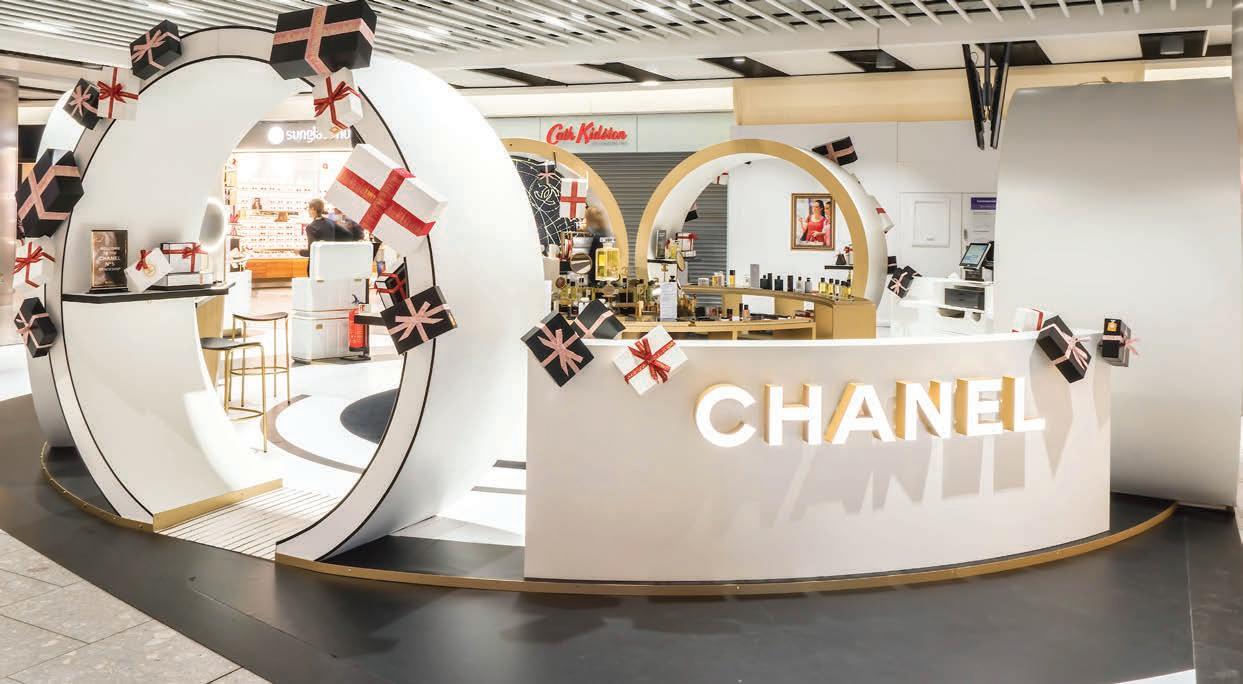
making our airport smarter and smoother for passengers and an even better place to work for colleagues.
This announcement details the scale and impact of the upgrade programme the UK’s hub airport will undertake over the next two years. These investments will ensure that Heathrow continues to provide opportunities for UK businesses of all sizes to grow and thrive while delivering for passengers and businesses that depend on a world-class hub.
Planned investments total £1.05 billion in the airport’s infrastructure in 2025, and an additional £1.29 billion to be invested in 2026
Brexit adds another layer of complexity, influencing regulatory frameworks and passenger dynamics.
As the UK navigates its post-EU landscape, Heathrow’s role in facilitating international trade and travel becomes increasingly vital. The airport’s adaptability will be crucial in responding to geopolitical shifts and economic uncertainties.
Heathrow’s impact extends beyond economic metrics; it plays a significant role in the surrounding communities. The airport engages in various social responsibility initiatives, focusing on education, employment, and local development. Through partnerships with schools and charities, Heathrow invests in skill development and job creation, fostering a positive community relationship.
Moreover, the airport’s commitment to diversity and inclusion is evident in its workforce policies
and community programmes. By promoting equal opportunities and supporting local enterprises, Heathrow contributes to social cohesion and regional prosperity.
Heathrow Airport is more than a transportation hub; it is a symbol of connectivity, innovation, and economic vitality. Its history is a reflection of the UK’s evolution, while its present operations underscore the complexities of modern aviation. As Heathrow looks to the future, it faces the dual challenge of expansion and sustainability, navigating a path that balances economic growth with environmental stewardship.
The airport’s ability to adapt and innovate will determine its trajectory in an increasingly interconnected and environmentally conscious world. For business executives, stakeholders, and policymakers, understanding Heathrow’s multifaceted role is crucial in shaping strategies that leverage its strengths and address its challenges.
In an era where global connectivity is both an opportunity and a responsibility, Heathrow Airport stands poised at the forefront, ready to usher in the next chapter of international travel and commerce.




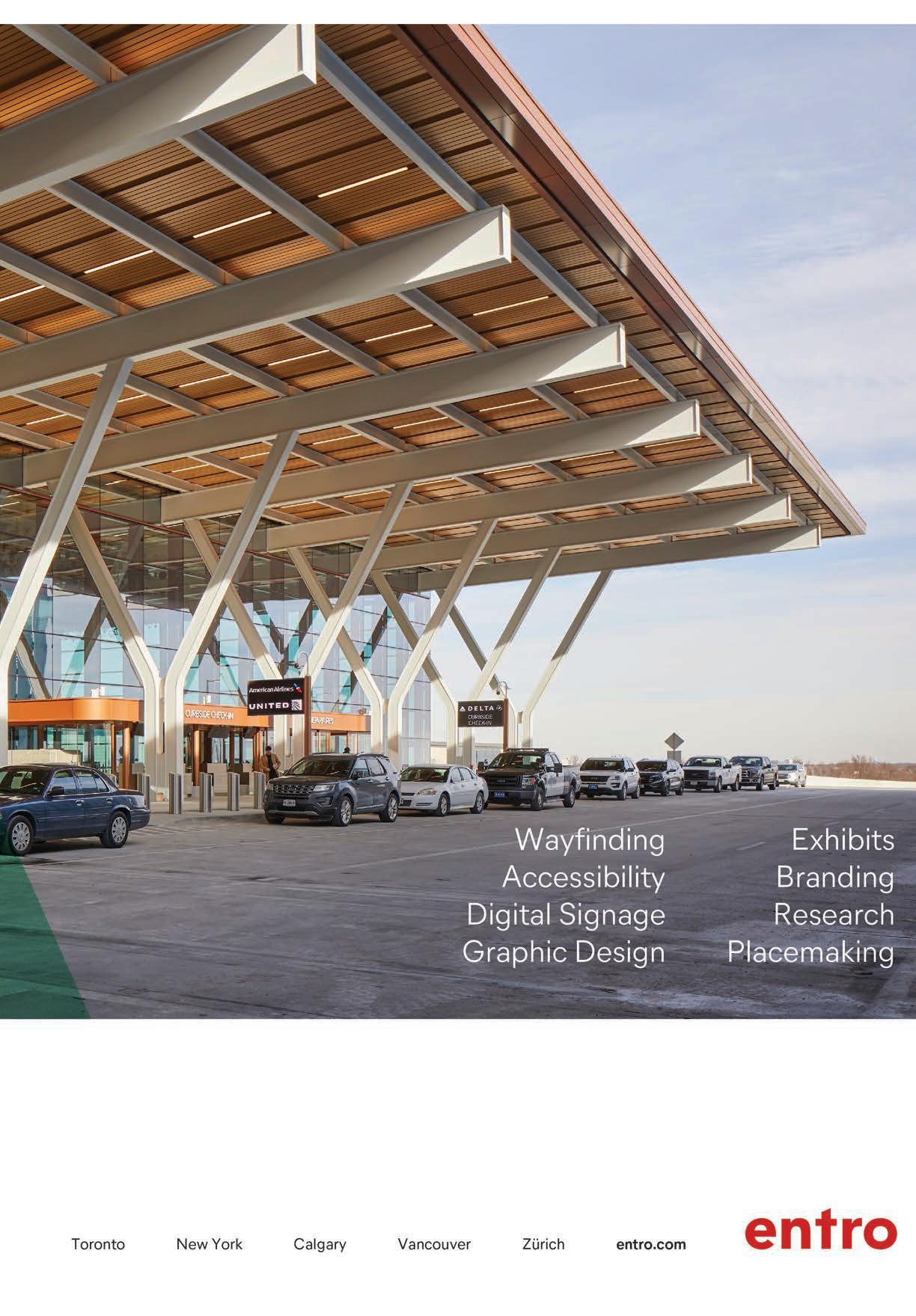

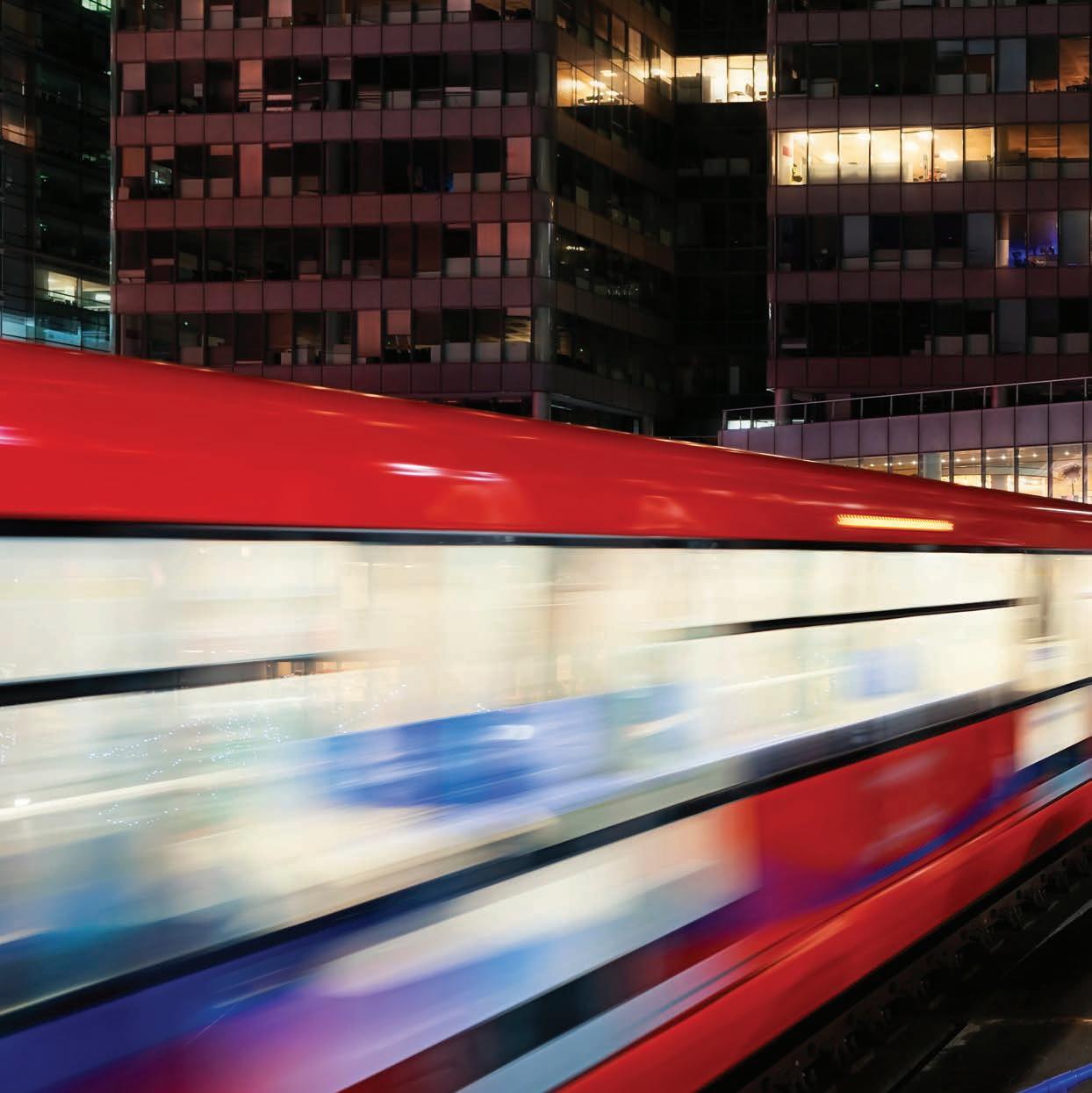
Transport for London (TfL) is responsible for managing the majority of London’s public transport network, including buses, trains, trams, and cycling infrastructure. Over the years, TfL has worked tirelessly to enhance the city’s transport system, ensuring it meets the needs of a growing population while prioritising environmental sustainability. This involves implementing new technologies, expanding services, and promoting ecofriendly transport options to reduce the city’s carbon footprint. Through these efforts,
TfL aims to provide a reliable, efficient, and sustainable transport network that supports London’s economic growth and improves the quality of life for its residents.
TfL’s investments are pivotal in maintaining and upgrading London’s extensive transport network. One of the most notable investments is the ongoing conversion of Tube stations to LED lighting. With over 40% of Tube stations, including major hubs like King’s Cross St Pancras, already upgraded, TfL is on track to achieve full conversion
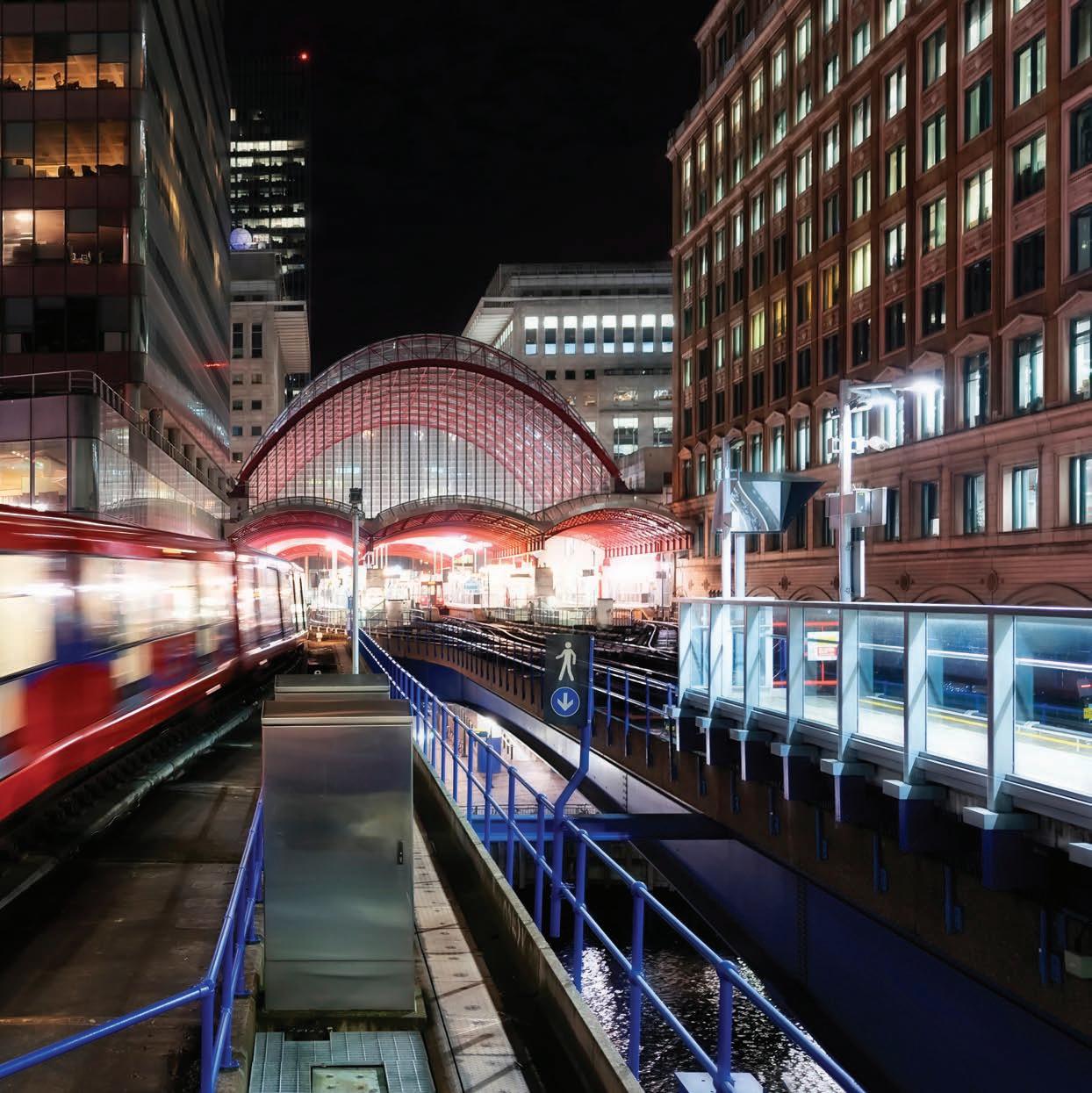
by the start of the next decade1. This initiative not only enhances the passenger experience by providing brighter and safer environments but also significantly reduces energy consumption and operational costs.
Transport for London’s (TfL) work to decarbonise its operations continues at pace with the installation of 6,000 Light Emitting Diode (LED) bulbs at King’s Cross St Pancras Tube station. This is the latest of the 120 stations across the Tube network to be upgraded, which means more than 40 per cent of the Tube network is now brighter
and more efficiently lit, making journeys more comfortable and safer for customers.
Customers who use the busy interchange station are benefiting from a more brightly lit journey after the LED conversion, with the new bulbs consuming less power, halving carbon output and the cost of electricity compared to traditional lighting. It is expected to generate energy savings of 1400 MWh per year, equivalent to powering 500 number of homes a year [1] or almost 300 tonnes of Carbon Dioxide equivalent (CO2e) and up to £455,000 in operational savings in the first
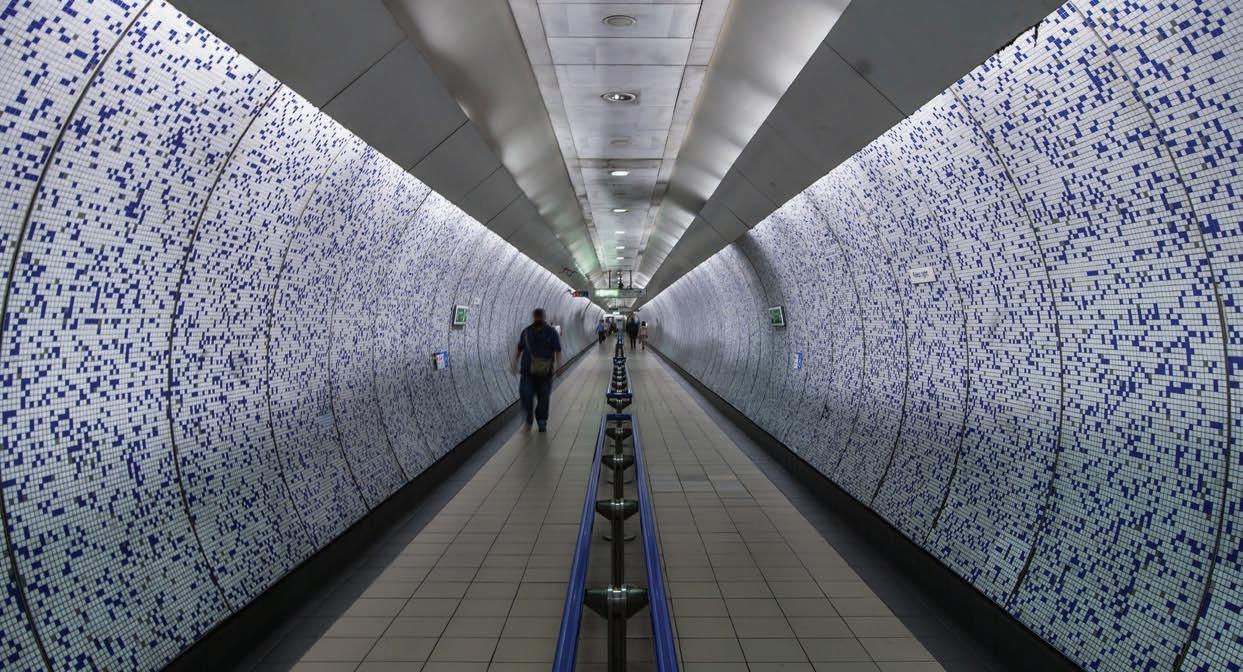
year. LED lighting also lasts longer than traditional fluorescent lighting, reducing maintenance and replacement costs.
Currently, more than 40 per cent of Tube stations across London - such as Westminster, Golders Green and Old Street - have been converted to LED lighting, with further stations, such as Bank and Monument planned for a lighting upgrade in the coming years. Due to the nature of the work, it is carried out when stations are closed and power is switched off, which means limited windows to carry out the work. The majority of LEDs used in stations across the network have come from UK-based suppliers and installers, ensuring the security of supply and supporting the UK’s growth and innovation in the lighting sector. At the start of the next decade, TfL aims to have all stations converted to LED lighting, which will deliver a significant saving in associated CO2e and support the Mayor and TfL’s wider work for London to be a net-zero city by 2030.
Lilli Matson, Chief Safety, Health and Environment Officer at TfL, said: “Decarbonising our operation is key to reducing the impact of public transport on climate change. By upgrading key stations like King’s Cross St Pancras to LED lighting, it not only provides a brighter, more pleasing environment for our customers, but it also helps us reduce costs and carbon emissions. Work to decarbonise our operational buildings helps us run a more energy efficient network, underpinning our commitment to do what we can to ensure our services are the
most sustainable way to move around the city.
“London is helping to lead the way towards achieving net zero and we are committed to doing what we can to ensure our services are the most sustainable way to move around the city.”
Mete Coban, Deputy Mayor for Environment and Energy said: “LED lights are a great way for TfL to decarbonise the network and help achieve net zero carbon by 2030. The new lighting will cut costs and carbon emissions while providing customers with a brighter and more comfortable journey through the station.
“This will help our mission to make London more climate resilient, creating a fairer, greener city for all.”
David Bide, Managing Director of Armadillo, an Essex-based LED supplier to the Tube network, said: “Armadillo were very pleased to be engaged in TfL’s introduction of LED lighting. Armadillo worked alongside TfL’s engineers to fully understand the requirements of the network and build a product to exceed the material safety requirements. As a result, we built an LED product for the Tube network, including at King’s Cross St Pancras Tube station, which significantly reduced heat and carbon emissions as well as maintenance requirements like replacements and cleaning. The new standards of increased lumen outputs also assisted with enhanced CCTV recognition and platform safety. With the ongoing product improvements and evolving technology,
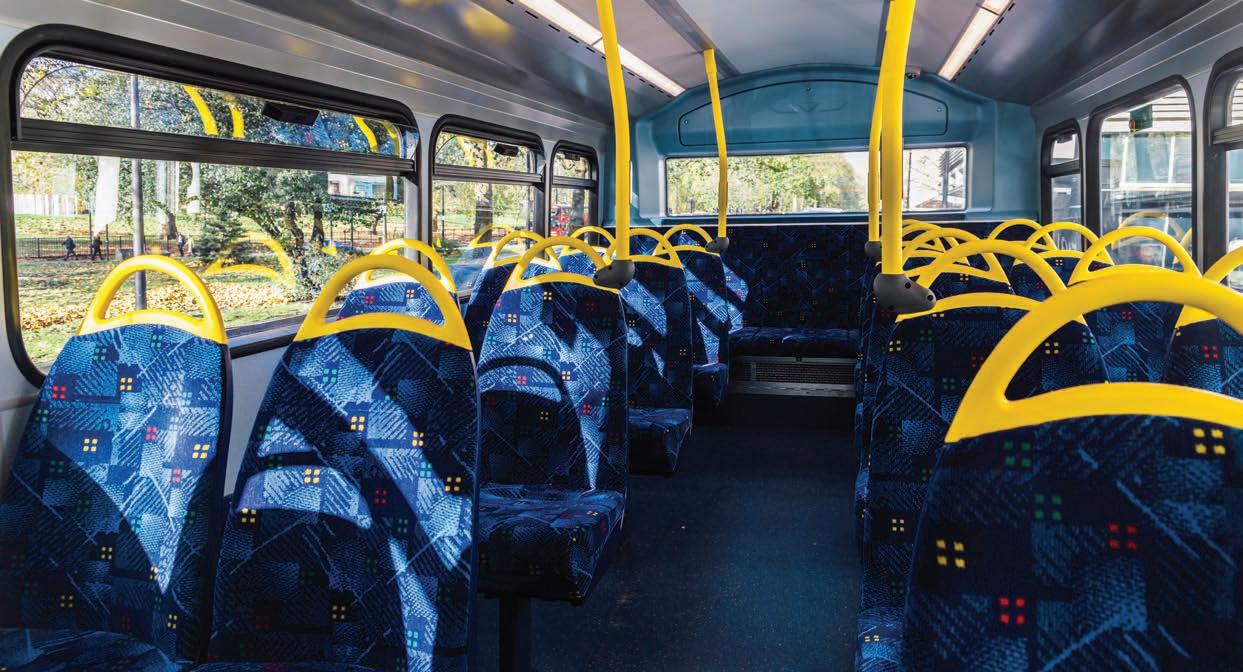
even greater energy savings can be generated for the Tube network through increased lumen performance and energy reductions.”
In addition to stations, TfL is also working to convert depots to lower-energy-consuming LED lighting and using smart technology so that it can continue to operate the network but in a more energy efficient way. Work has recently been carried out at Neasden and Ruislip Depots and in the Wheel Lathe Shed at Upminster depot, which have not only reduced associated energy consumption for lighting but also provided a better lit working environment for train maintenance teams who work to keep trains in active service across the network. On completion of the LED lighting conversion, the depots are expected to reduce electricity consumption and carbon emissions by almost half.
TfL is using the £2.3m of grant funding awarded to decarbonise buildings at Neasden Depot and Finchley Central Signals Depot for London Underground. These projects will target the replacement of ageing fossil fuelled heating systems with low carbon alternatives as well as improving building performance through implementation of fabric measures. When completed, these buildings will be better insulated, more comfortable places to work, with modern, low carbon systems such as heat pumps, LED lighting and solar panels. It is anticipated this project will reduce emissions by 300 tonnes of CO2e a year.
Elsewhere on the network, the lighting at 27 tram-stops along the London Tram network in south London have also been converted to LED lighting in recent years, helping to improve safety of customers late at night as well as reduce the amount of light pollution to nearby areas. The Bakerloo and Central line trains are also currently both being upgraded to have LED lighting within them to help reduce the power consumption and allow for further wider improvements for customer information systems to be delivered.
TfL will finish converting its bus shelter lighting to LEDs - currently at 95 per cent of shelters - by this summer to create safer, brighter and more welcoming spaces across the network for customers. TfL’s zero-emission fleet is also playing a key role in decarbonising transport operation and tackling the climate emergency. With more than 1,800 zero-emission buses in operation, it is the largest fleet in Western Europe. Carrying up to 80 times the number of passengers as a car, while taking up just three times as much space, they help to cut congestion. Route 358, powered by the pantograph technology which allows fast, highpower charging, was the latest milestone in the mayor’s commitment to deliver a zero-emission bus fleet by 2030.
Reducing carbon is essential to limiting the impact of climate change and saving the planet. TfL and the Mayor of London are committed to achieving net zero by 2030. The effects of climate change are being felt worldwide, and London is already
dealing with hotter, drier summers and warmer, wetter winters. By reducing emissions TfL is helping to limit the effects of climate change.
In the meantime, TfL is also considering how to futureproof the city for the already present and future changes in the climate, building on the measures it set out in its Climate Adaption and Corporate Environment plans.
In addition to station upgrades, TfL is also focusing on its depots. Recent projects at Neasden and Ruislip Depots have seen the installation of lower-energy-consuming LED lighting and smart technology, which have improved energy efficiency and reduced carbon emissions3. Furthermore, TfL has allocated £2.3 million in grant funding to decarbonize buildings at Neasden Depot and Finchley Central Signals Depot, replacing fossil-fuelled heating systems with low-carbon alternatives.
Looking ahead, TfL’s vision for the future is both ambitious and inspiring. The organisation aims to have all Tube stations converted to LED lighting by the start of the next decade, delivering significant savings in associated CO2 emissions and supporting London’s goal to be a net-zero city by 2030. Additionally, TfL is exploring the use of smart technology to further enhance energy efficiency across its network.
TfL’s future plans also include the development of sustainable housing projects. A joint venture between Places for London, TfL’s property company, and central London developer Helical, has received planning approval for a 15-storey purpose-built student accommodation scheme and an adjacent nine-storey building comprising affordable homes above Southwark Tube station. This development will not only provide muchneeded housing but also contribute to the local community through new retail and community spaces.
A joint venture between Places for London, TfL’s property company, and central London developer Helical, has received a resolution to grant planning approval from the London Borough of Southwark for the development of a 15-storey purpose-built student accommodation scheme (PBSA), comprising 429 studio apartments, and an adjacent nine storey building comprising 44 affordable homes, above Southwark Tube station. Designed by architects AHMM, the development will include a new Bauhaus-inspired block which
will house the PBSA element, which will offer students a best-in-class experience in what is one of London’s best-connected Zone 1 locations. With several universities within a short journey from the station, the new development will also help to alleviate the demand on the private rental market in the area.
The joint venture is targeting a 4.5-star Home Quality Mark for the scheme’s affordable housing provision. It will also offer new retail space and community space including a shared community garden, as well as improvements to the public realm through an increase in the amount of greenery and provision of active frontages on the Cut and Isabella Street.
Future residents of the development will benefit from easy and fast public transport connections across the capital with London Bridge and Waterloo within walking distance. Being in zone 1, the development sits within some of the best of what city has to offer with theatres, restaurants and more on its doorstep.
Scott Anderson, Head of Property Development at Places for London, said: “It’s wonderful news to have received approval for our over station development above Southwark station. Designed to preserve the architectural heritage of the station and aiming for the highest of sustainability standards, our plans with Helical will bring new homes and provide real benefits for London. We’re proud to be providing improvements to the local community through new high-quality and affordable homes and student accommodation which will help to alleviate pressure on the housing market in the area.
We’re glad to be able to move forward with our plans where residents will benefit from new, high-quality public spaces, including a community garden space, new play spaces for children and shops around the station.”
Matthew Bonning Snook, CEO of Helical plc, added: “This planning approval is a further positive step forward in our JV with Places for London. Whilst the site benefitted from planning permission for a 220,000 sq ft office scheme we have brought forward a more valuable proposition at this important site which will deliver much in demand purpose-built student accommodation and affordable housing along with high quality public realm and significant benefits to the local community.”
Philip Turner, Director at Allford Hall Monaghan
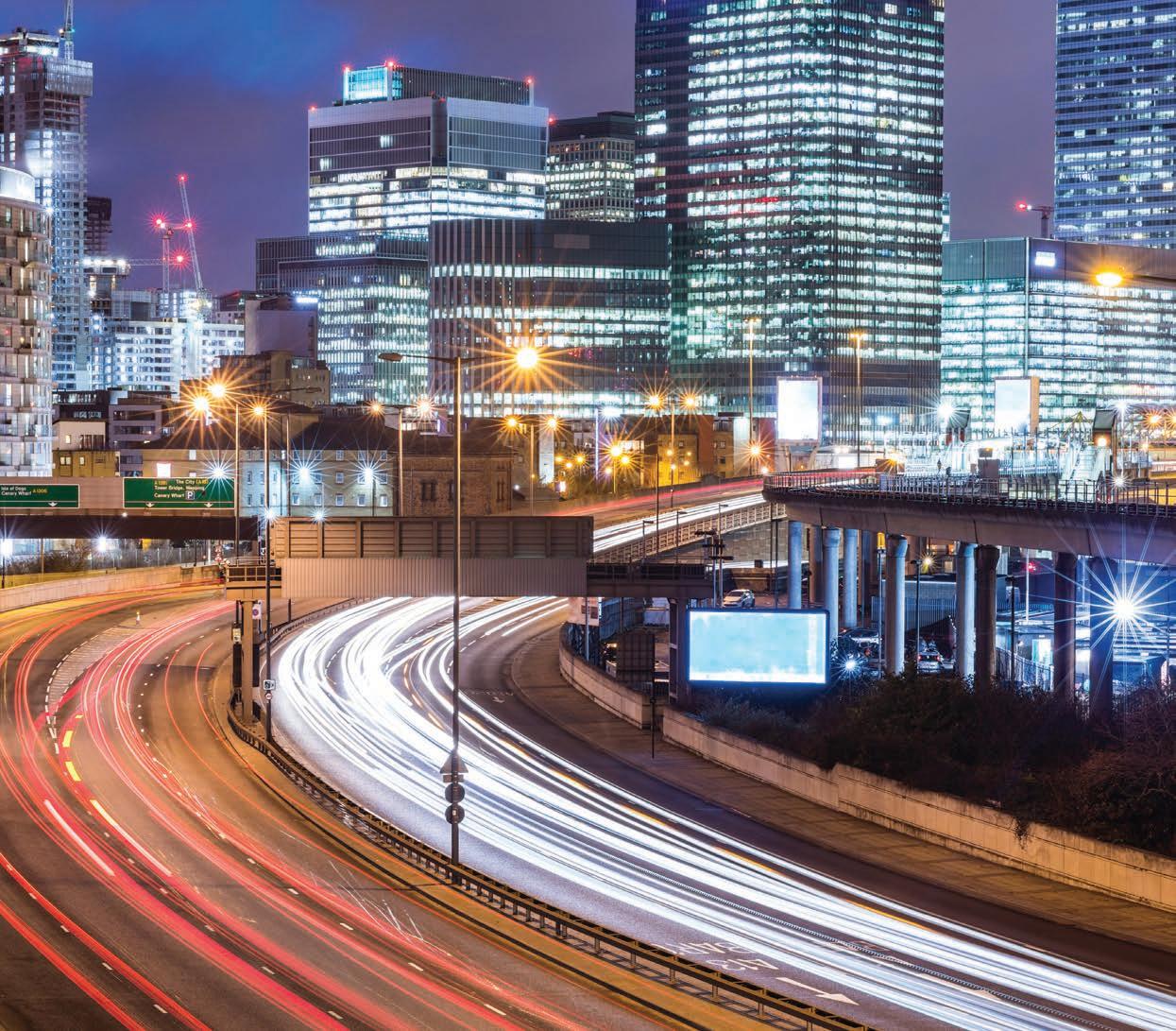
With over 30 years of experience in Telecoms and Datacoms and best-of-breed global partners, we have the right equipment to help with your network build and test, be it legacy or current.
Whether you simply need fibre patch cords, low cost transceivers or advanced testers like OTDRs or BERT, Laser 2000 can help.
Contact us to discover how we can help you with your network build, clean and test requirements. From Copper to Fibre, Wireline to GSM-R and E1 to 800GE, our products and expertise offer what you need to support the network you are building and maintaining.

Our presence in the world + 23,000 employees
€4.4 bn in annual revenue
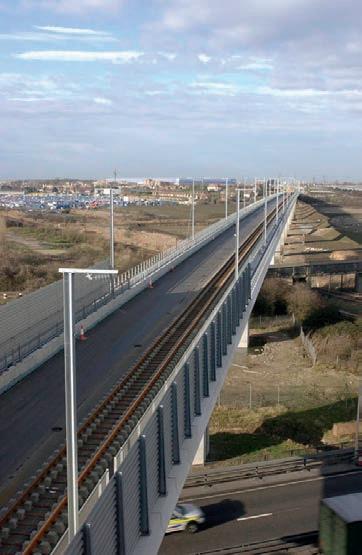


United Kingdom

France
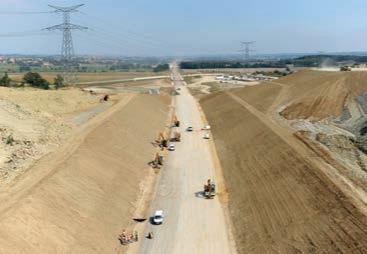
Uruguay
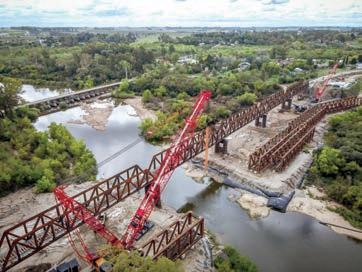
France
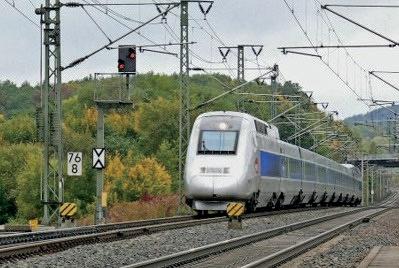
Egypt
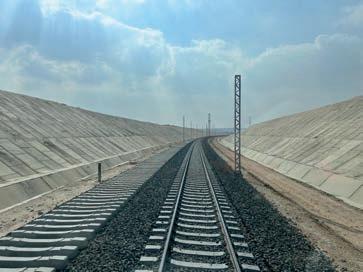
NGE – New Generations of Entrepreneurs – the fourth largest construction group in France, builds major infrastructures and urban or local projects. With its expertise in financing, design, construction, and maintenance, the Group is a key player in delivering infrastructures that address the economic and ecological challenges of the territories. Its entrepreneurial drive is supported by a strong employee ownership structure (the founders, management, and employees hold 72% of the Group's capital) reinforced by Montefiore Investment, a leading French investment first (28% of the capital). With a turnover of 4.4 billion euros, NGE operates in 17 countries, with its 23,000 employees. NGE supports its private and public clients in financing, designing, and building their transition projects in water, mobility, urban renovation, energy, and telecommunications.

Morris, said: “The Southwark over station development will be a significant new local landmark at a busy junction. Led by our clients Helical and Places for London, and working closely with Heyne Tillett Steel, our design seeks to make the most of this long-standing opportunity site while addressing the complexities of its location above the tube station. This project will deliver student housing, retail space, and public realm improvements, in addition to a significant amount of affordable housing for the local community.”
Cllr Helen Dennis, Cabinet Member for New Homes and Sustainable Development at Southwark Council, said: “We want decent homes for everyone in Southwark and I’m delighted this project to provide 44 much-needed council homes has the green light to move forward.
I’m particularly pleased that we reached a creative solution, using our planning policies to turn a negative situation into a positive at Styles House. Even more local residents will now benefit from this deal, with 44 new council homes in a development that will also enhance the existing estate.
I look forward to seeing building works getting started again here soon, delivering new council homes for those in need.”
The Southwark over station development is the one of three initial sites that Places for London and Helical are delivering as part of the Platinum Portfolio joint venture.
A 140,000 sq ft office building at 10 King William Street is underway and is due for completion in December 2026 in a supply constrained market in the heart of the City of London. Another office development of 235,000 sq ft at Paddington is progressing and due to start early next year.
The proposals form part of Places for London’s wider housing programme, which will provide thousands of homes across the capital. Work has started on Places for London sites across London that will deliver 4,300 homes, and more than 1,300 homes have been completed, of which 54 per cent are affordable homes.
TfL’s commitment to reducing its carbon footprint is evident in its comprehensive decarbonization strategies. The installation of LED lighting across the network is a cornerstone of these efforts. The new lighting systems consume less power, halve carbon output, and generate substantial energy savings2. This initiative is expected to save 1400 MWh per year, equivalent to powering 500 homes annually, and reduce carbon dioxide emissions by almost 300 tonnes.
Moreover, TfL’s zero-emission bus fleet, the largest in Western Europe, plays a crucial role in tackling the climate emergency. With over 1,800 zero-emission buses in operation, TfL is making significant strides towards its goal of a zeroemission bus fleet by 2030. These buses not only reduce congestion but also contribute to a cleaner, greener London.
Transport for London is at the forefront of sustainable urban mobility. Through strategic investments, innovative decarbonization efforts, and forward-thinking plans, TfL is setting a benchmark for cities worldwide. As London continues to grow and evolve, TfL’s unwavering commitment to sustainability ensures that the city remains a vibrant, resilient, and environmentally conscious metropolis.



Dream Living is more than just a Prize Draw Competition Website. We’re a gateway to extraordinary experiences, designed to create lasting memories. Our mission is to inspire, excite, and connect people through unforgettable adventures. dream-living.co.uk
At Eastern Windows and Doors, we supply and install high-quality windows, doors, and conservatories, offering bespoke designs, expert craftsmanship, and energyefficient solutions across East Anglia.
Alex Bowles 01603 716022 contact@easternwindowsanddoors.co.uk easternwindowsanddoors.co.uk
We provide bespoke first aid training for schools, nurseries, businesses, clubs, voluntary organisations and individuals in the Essex area. Flex Training delivers a range of courses for businesses, parents, carers and childcare professionals. The courses allow individuals to understand and develop practical first aid skills, in a supportive and realistic manner. We cover Emergency First Aid (one day), First Aid at Work (one & three days) and First Aid Refresher Training (two days) & Paediatric First Aid Courses (one and two days).
John Fuller 07966 032909 info@flextraining.co.uk flextraining.co.uk

We are a golf booking specialist offering discounted green fees and tailored golf holiday packages throughout Spain, Portugal, Turkey, Canary Islands & the Balearic Islands. Your golfing experience is what matters most to us, we pride ourselves in offering competitive rates and a personal service.
Neil Juniper +34665009811 office@spanishgolfoptions.es golftwo4one.com

Homely Blinds and Shutters is a Norfolk-based company specialising in custom-made blinds, shutters, awnings, and pergolas, designed to enhance homes with comfort and elegance. Known for exceptional customer service, we offer tailored solutions and innovative products like motorised, energy-efficient options and Blind Screen technology.
01263 666190 team@homelyblindsandshutters.co.uk homelyblindsandshutters.co.uk
Mashuni - Full Service Design Agency
BRANDING : LOGOS : BROCHURES : WEBSITE DESIGN, BUILD & HOSTING
ADVERTISING : PRINT : PRESENTATIONS : INFOGRAPHICS : EXHIBITION STANDS
Andy Taylor 07920 775767 andy@mashuni.com mashuni.com

MD Wealth Management Ltd
Michael Duale -APFS - Chartered Financial Planner Partner Practice of St. James’s Place Wealth Management 2 Queens House, The Street, Long Stratton Norfolk NR15 2XG Office - 01379 415511 Mobile - 07583 067635 mdwealth@sjpp.co.uk md-wealthmanagement.co.uk michaelduale MDWealthManagement




North Norfolk Projects
Commercial and Domestic Project Management Services Thorpe Road, Southrepps, Norwich, Norfolk NR11 8NY 07917 106532 pm@northnorfolkprojects.com northnorfolkprojects.com
Park Property Finance
At Park Property Finance we manage mortgages, re-mortgages, BTLs, HMOs, bridging, and development finance for commercial and residential properties. We also provide protection services such as life insurance, critical illness cover, and buildings and contents insurance.
Iain Park DD – 07947 786369 E - iain@parkpf.co.uk parkpropertyfinance.co.uk
Uprint Solution Ltd
UPrint offer cost effective print solutions, varying from ad hoc toner supply right thought to fully managed print services nationwide. Contact us today for free advice and office audits!
41-43 Woodside Business Park, CH41 1EP 0800 085 0595 enquiries@u-print.org u-print.org
Wingfield Consultants
Wingfield Consultants help organisations grow and thrive by offering expert support in business strategy, category management, procurement, brand development, and tailored training solutions.
+44 07791 101142 simon@wingfieldconsultants.co.uk
wingfieldconsultants.co.uk

Solutions that ensure quality and safety

TÜV SÜD Services for the Amusement Ride & Park Industry
Add value. Inspiretrust.
Added Value
Developing Phase Operation and Use
▪ Document Review
▪ Gap Analysis
Design / Manufacturing / Commissioning
▪ Design Control
▪ Pre-shipping Inspection
▪ Feasibility
▪ Technical Due Diligence
▪ Design Review (DR)
▪ Manufacturing Inspection (MI)
▪ Factory Acceptance Test (FAT)
▪ Site Acceptance Test (SAT)
▪ Initial Examination (IE)
▪ Installation / Setup Inspection
▪ Regular Inspection
▪ Operation and Maintenance Safety Assessment
▪ eLearning (Operation and Maintenance Staff Qualification)
▪ Device Log (digital log book)
▪ Measurement Services
▪ Incident / Accident Analysis
▪ Retrofit Service
▪ Identification of safety critical issues
▪ Substantial risk reduction in respect to ride incidents/ accidents
▪ Independent and unbiased evaluation of state of preservation of the rides and state of maintenance
▪ Reduction of legal exposure in case of an incident/accident
▪ Knowledge transfer between staff and expert engineering team
▪ Reports are basis for operation permit
▪ Reduction of reputational risks






